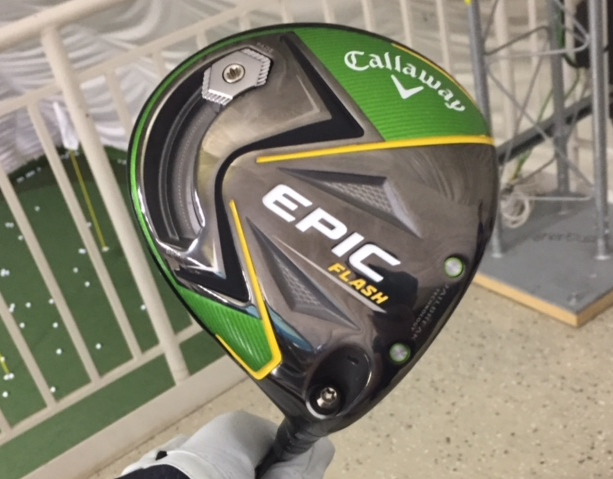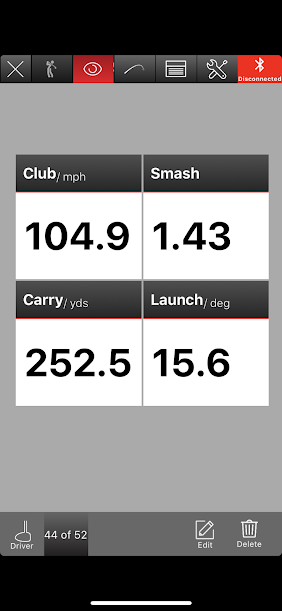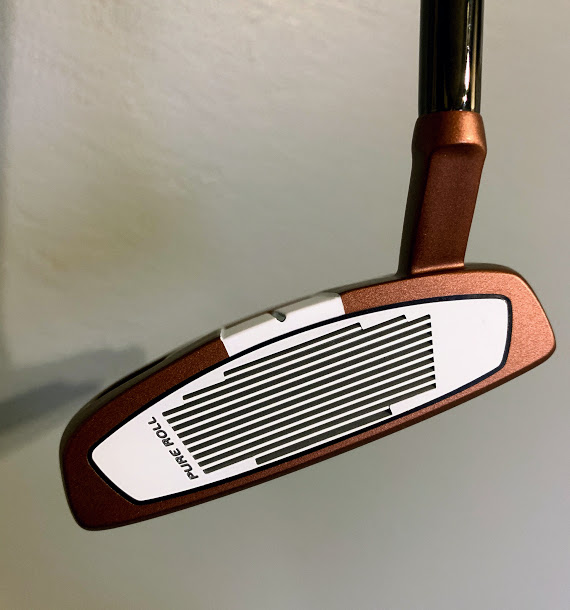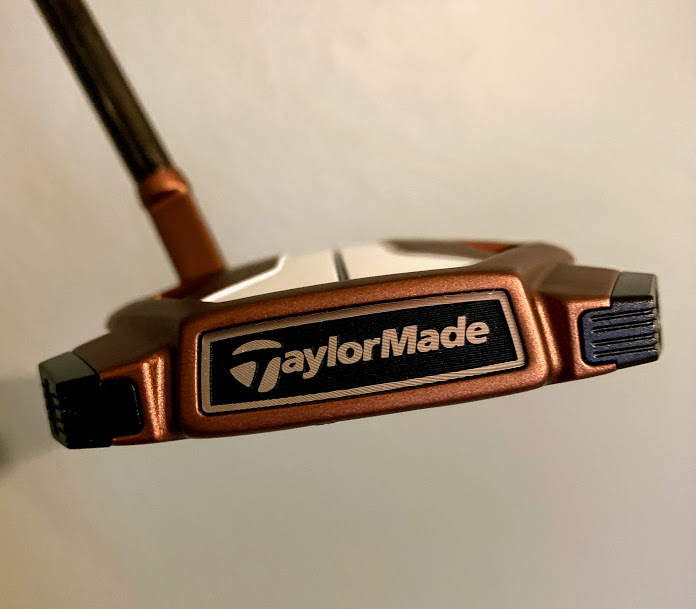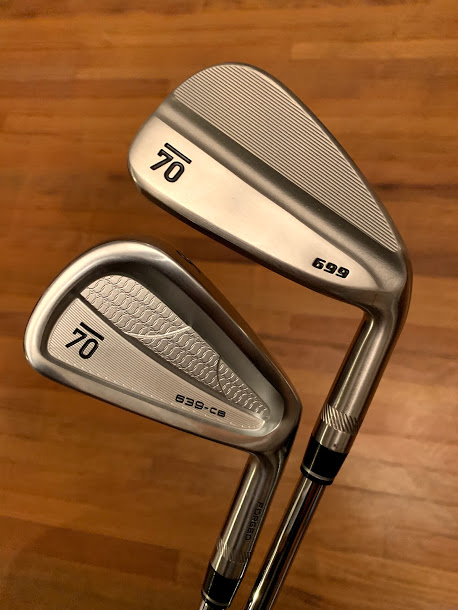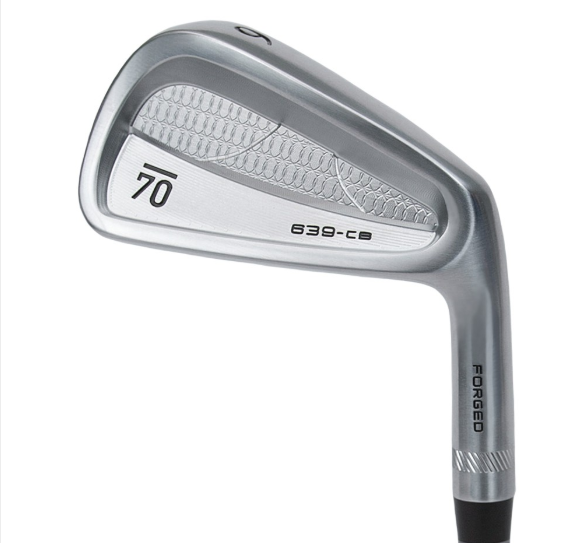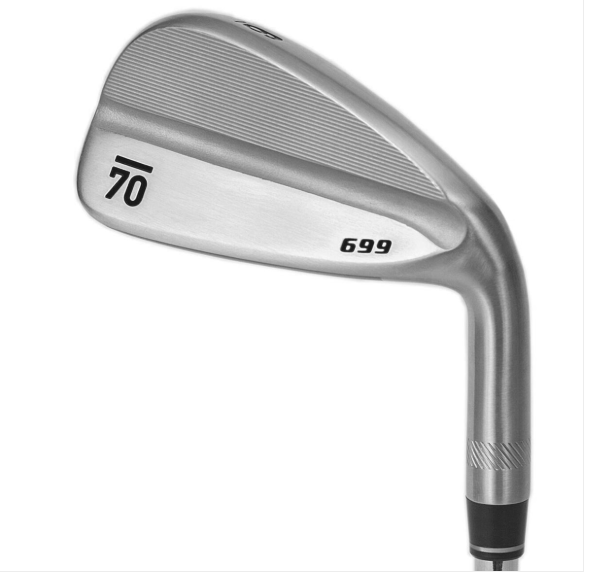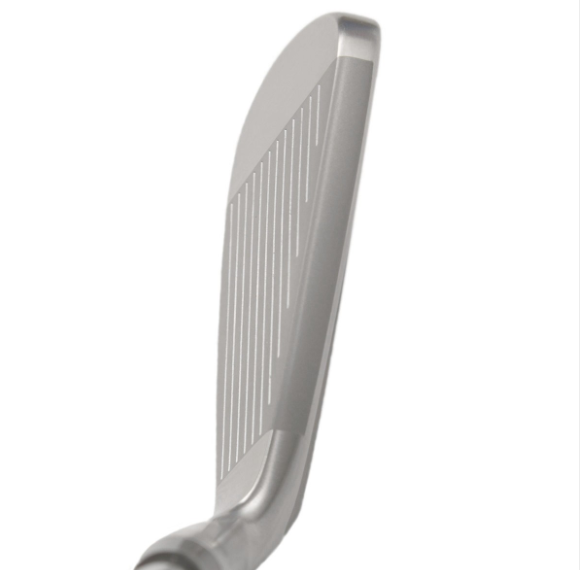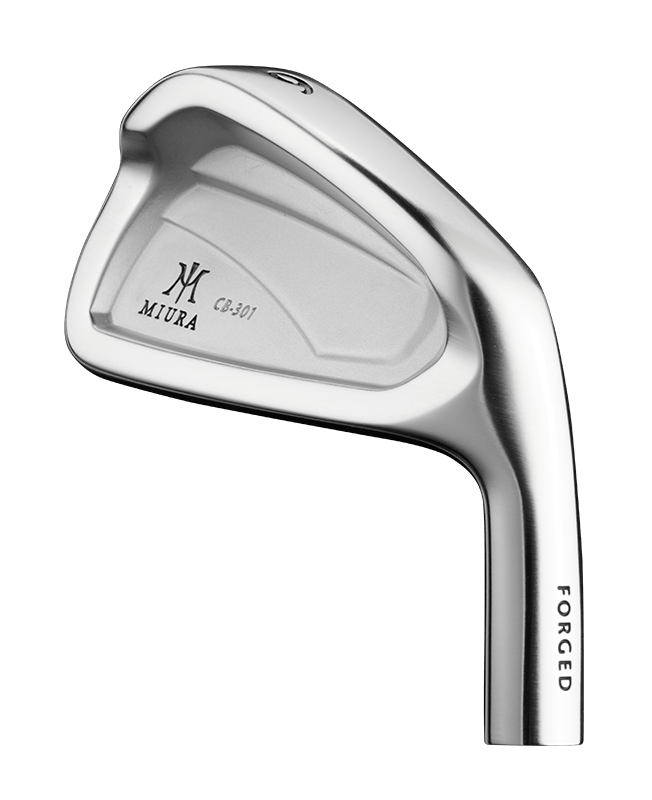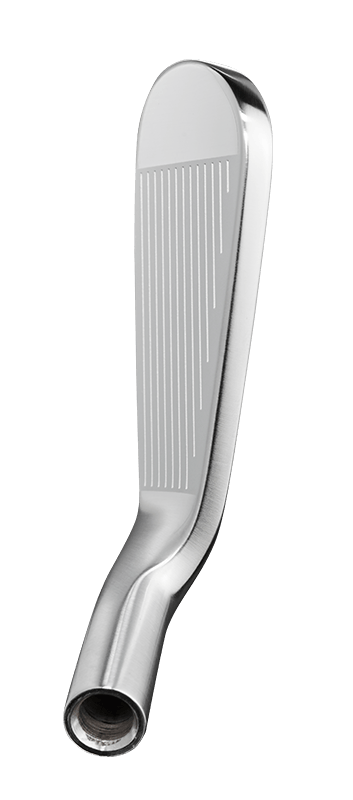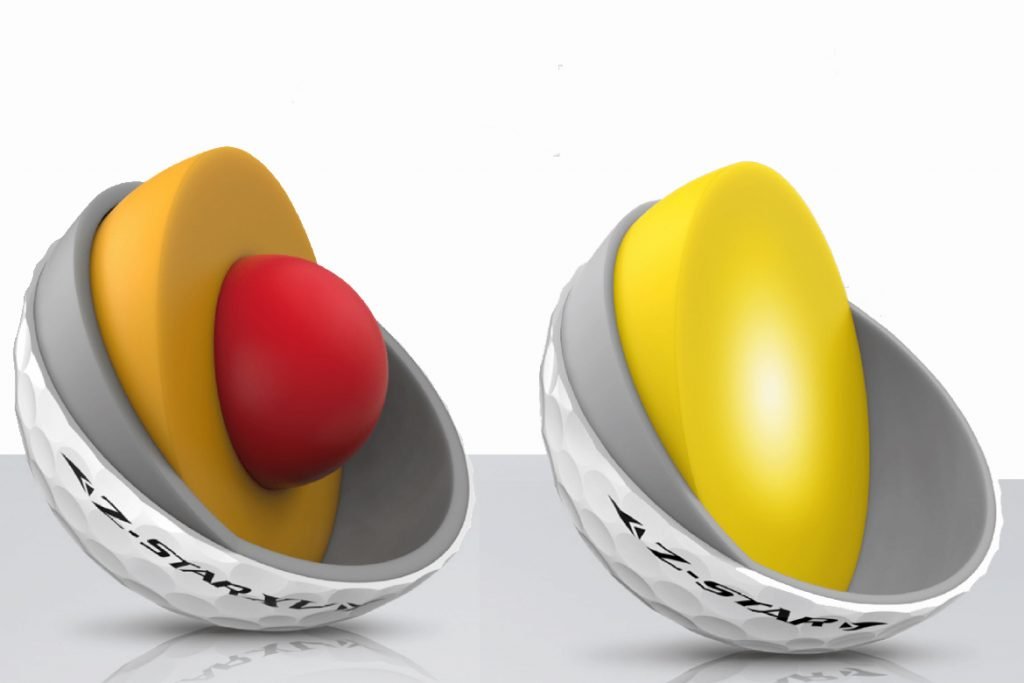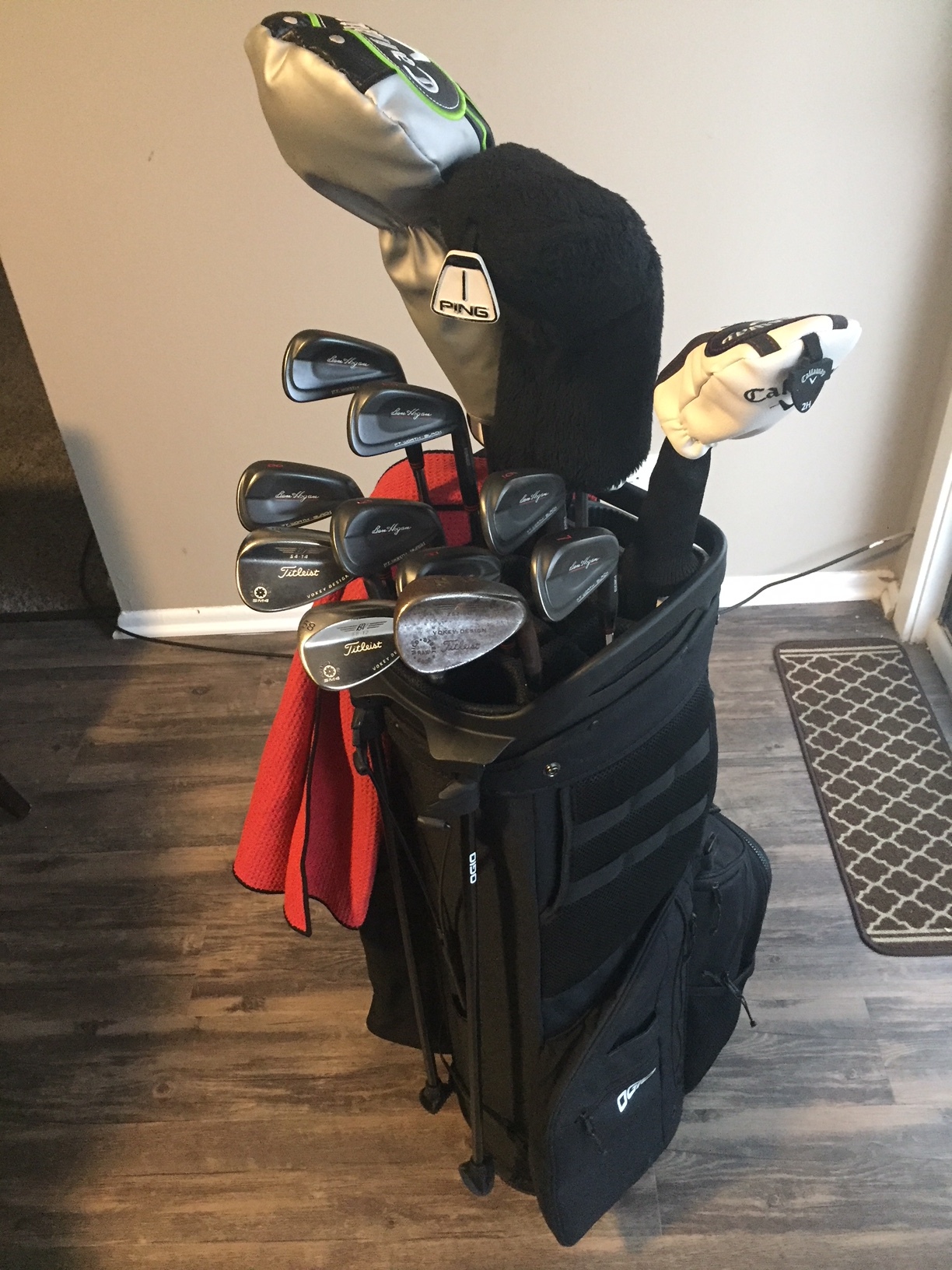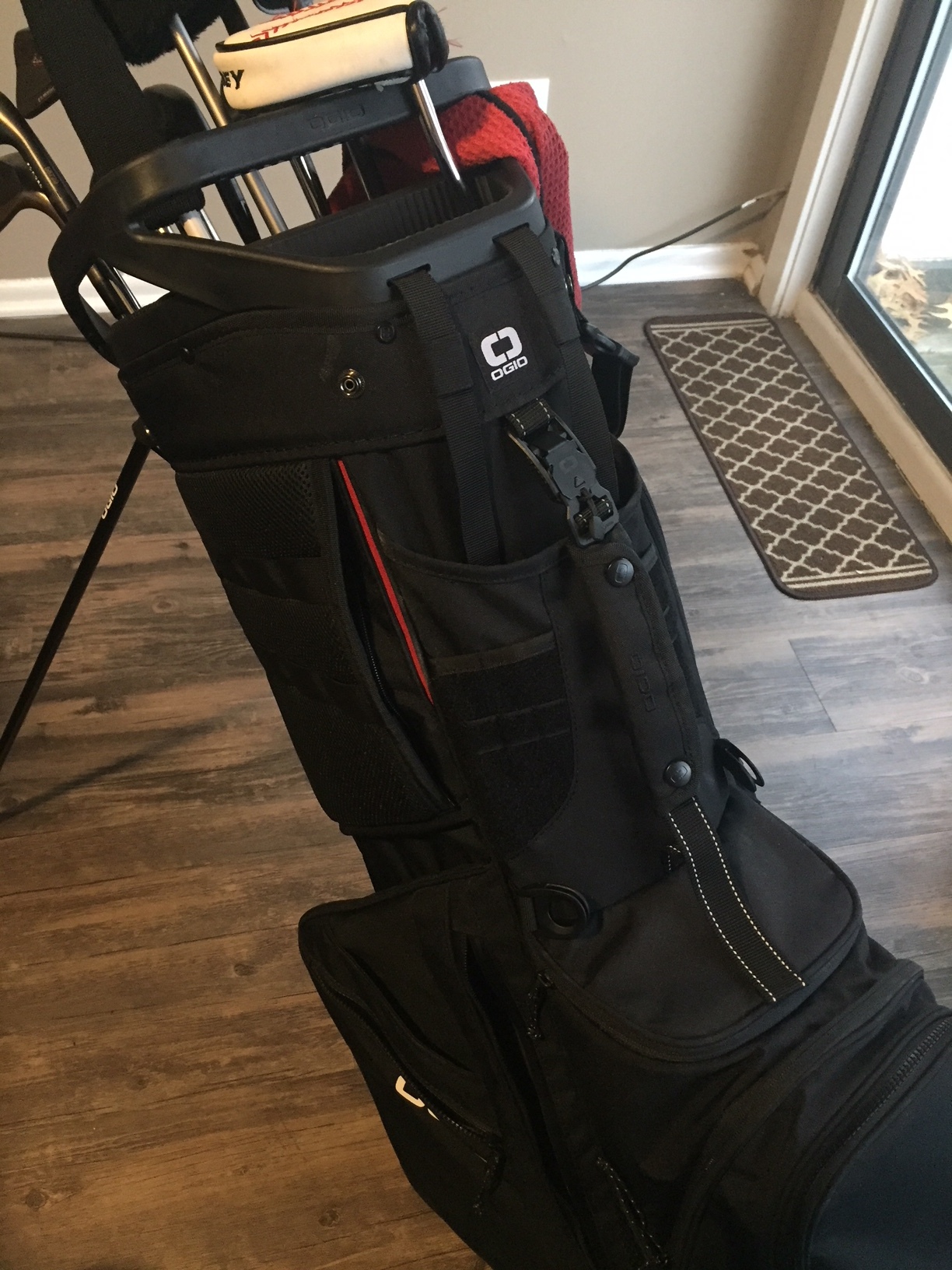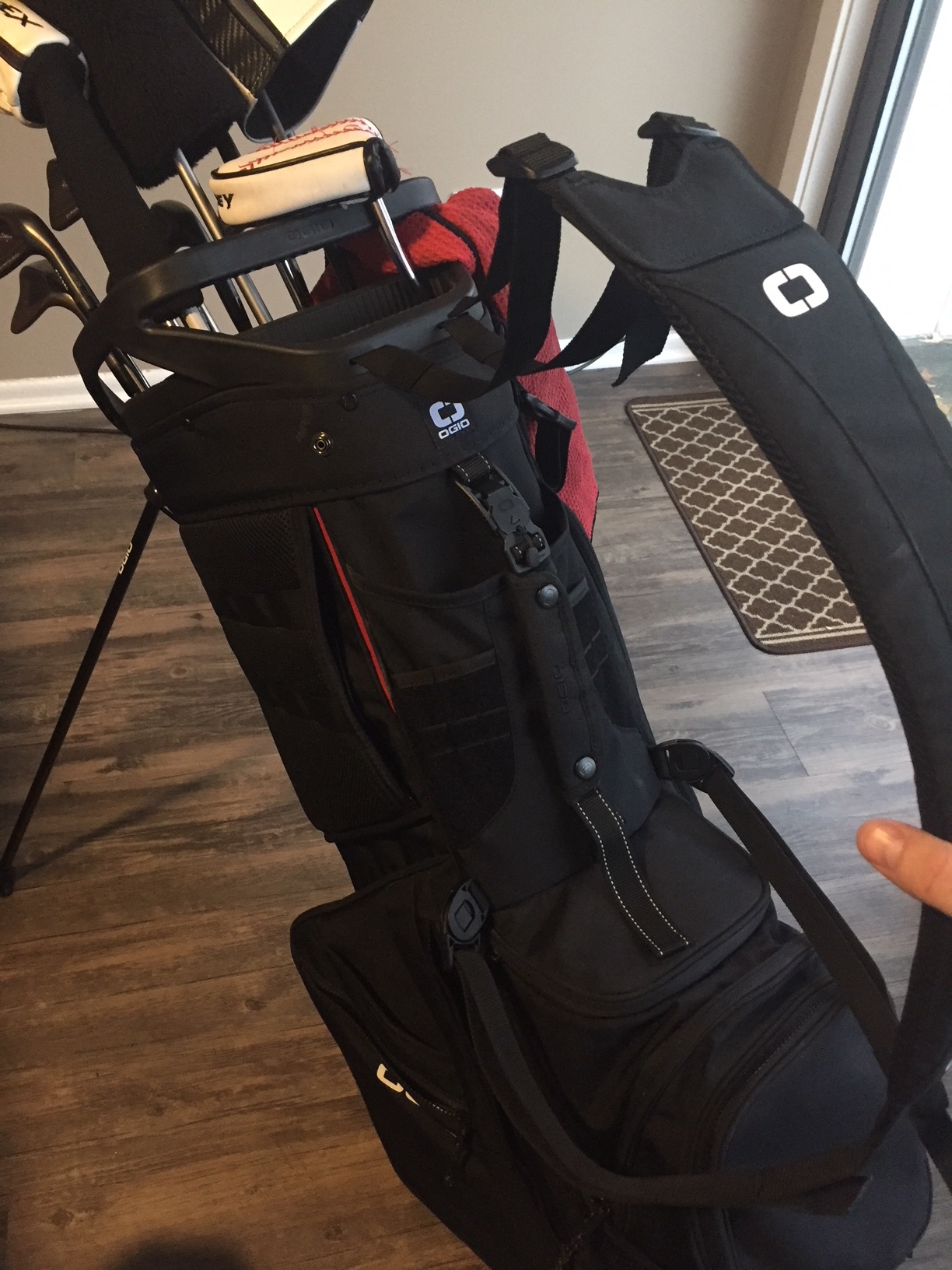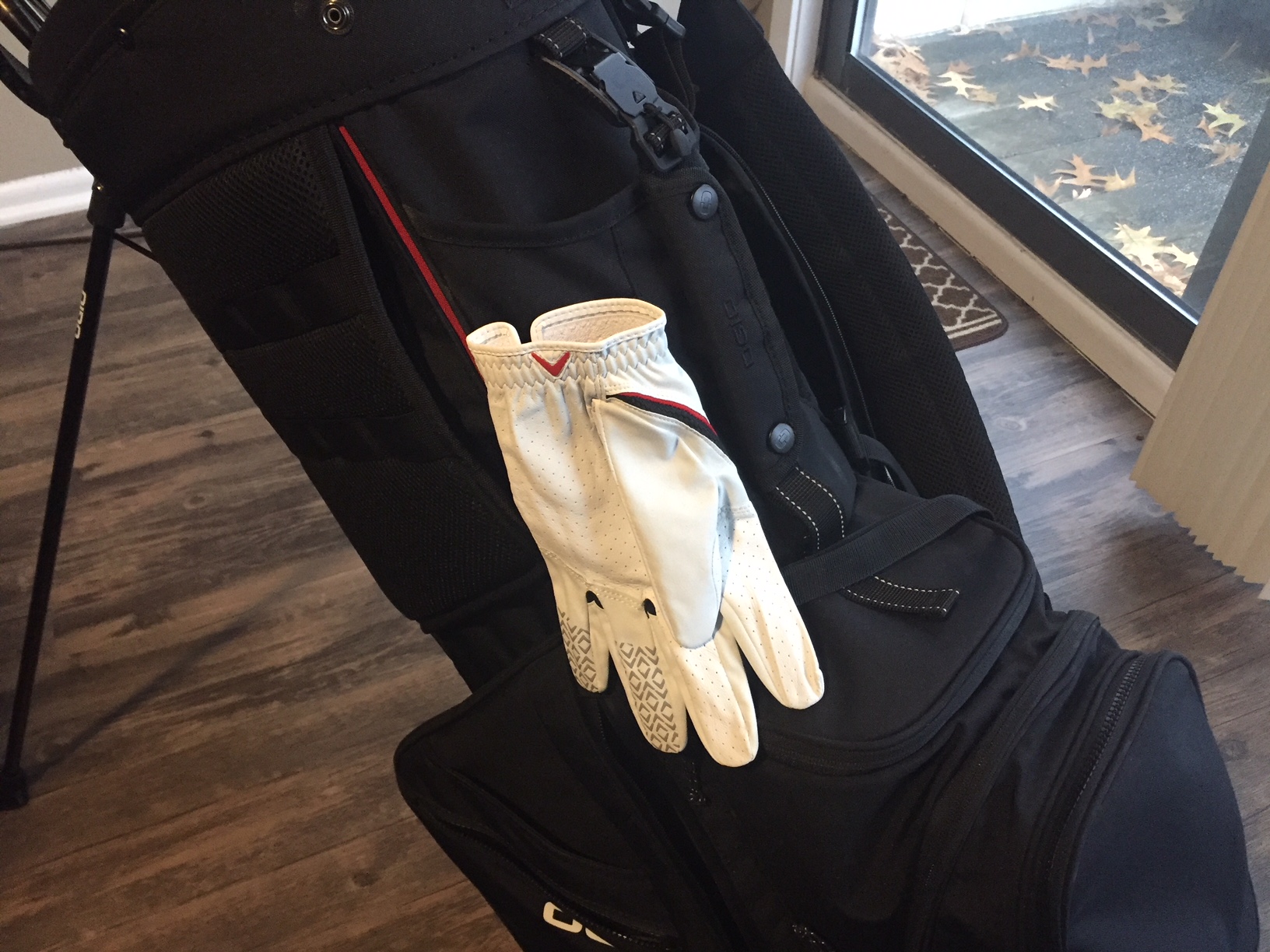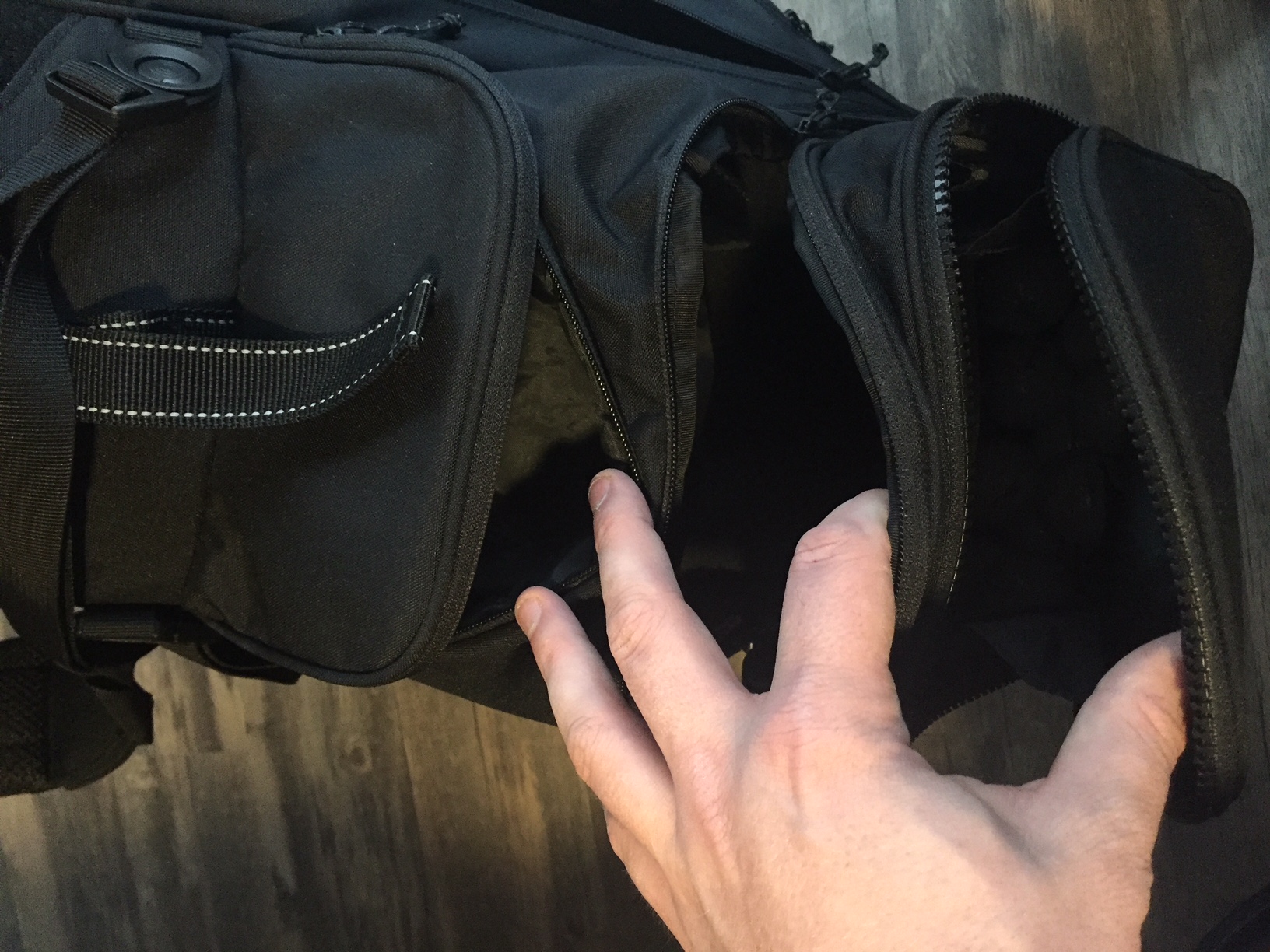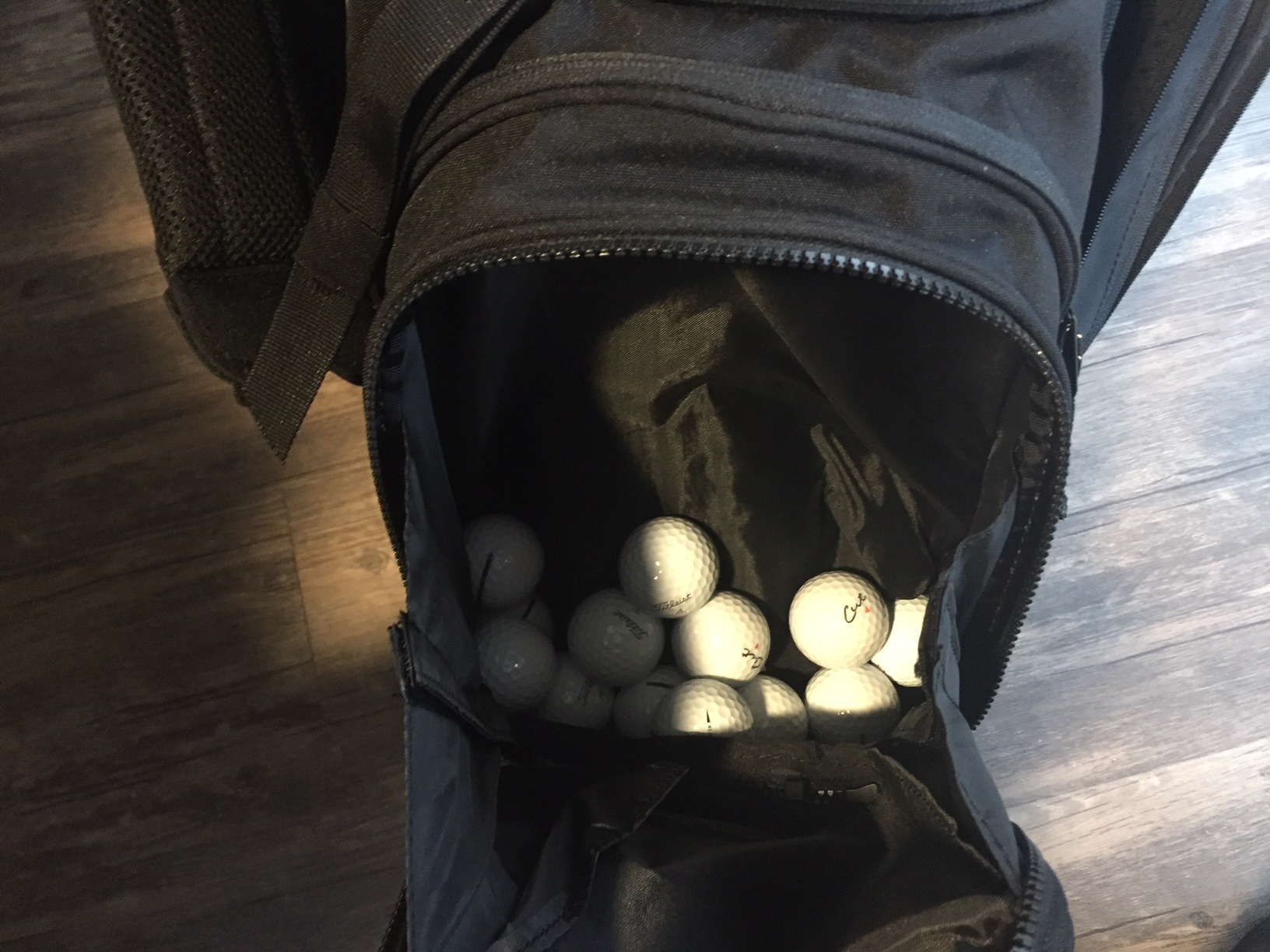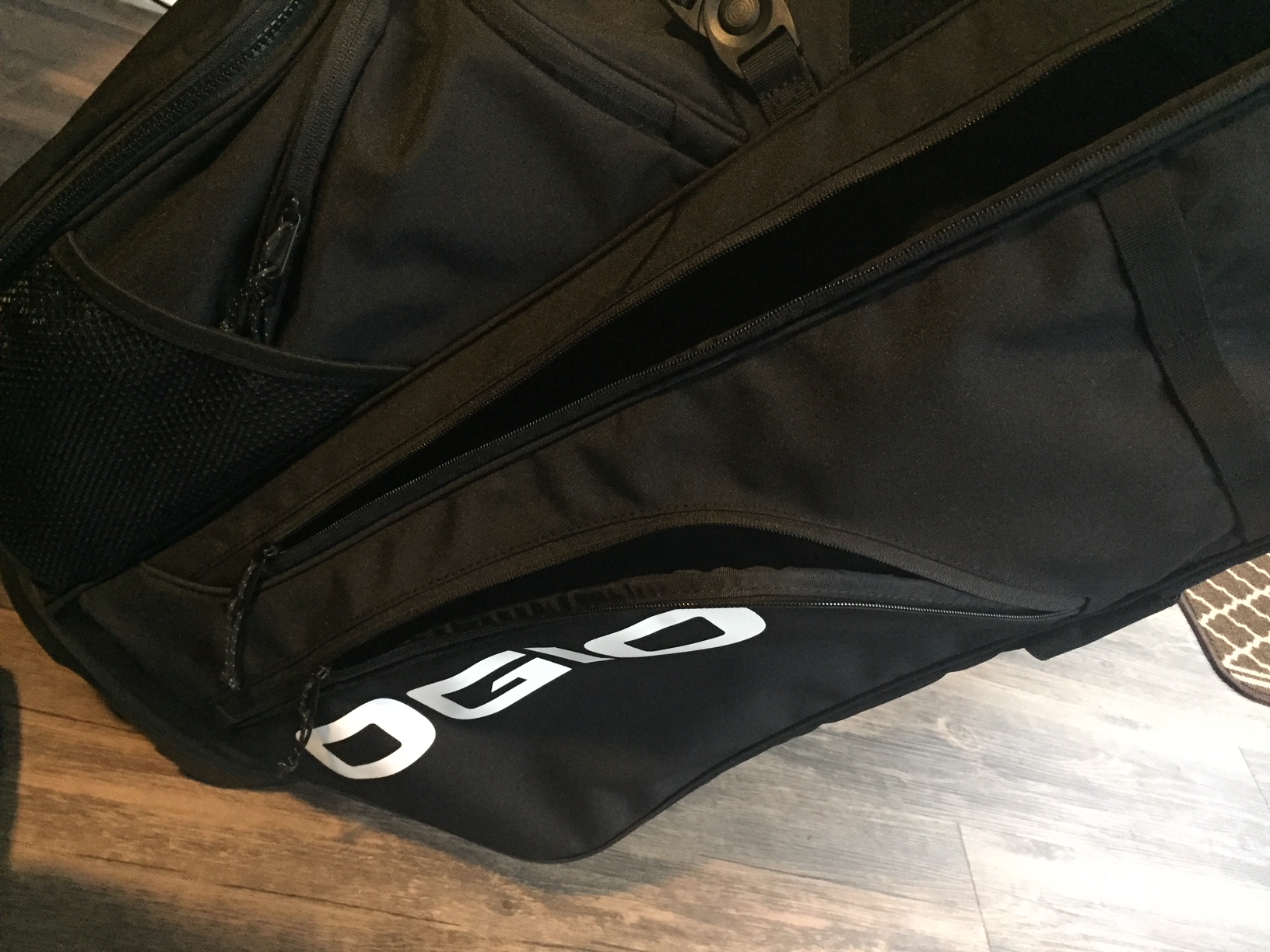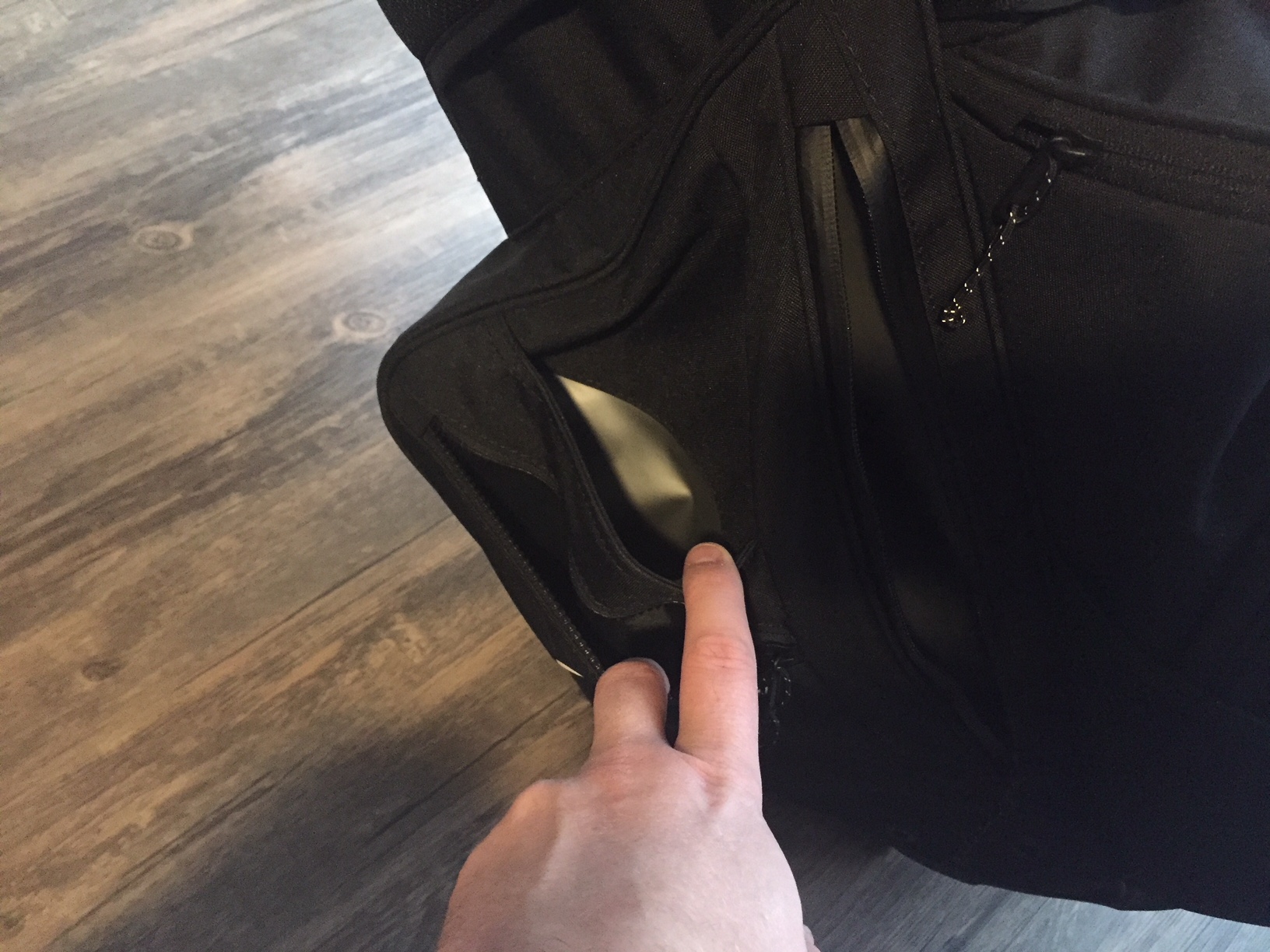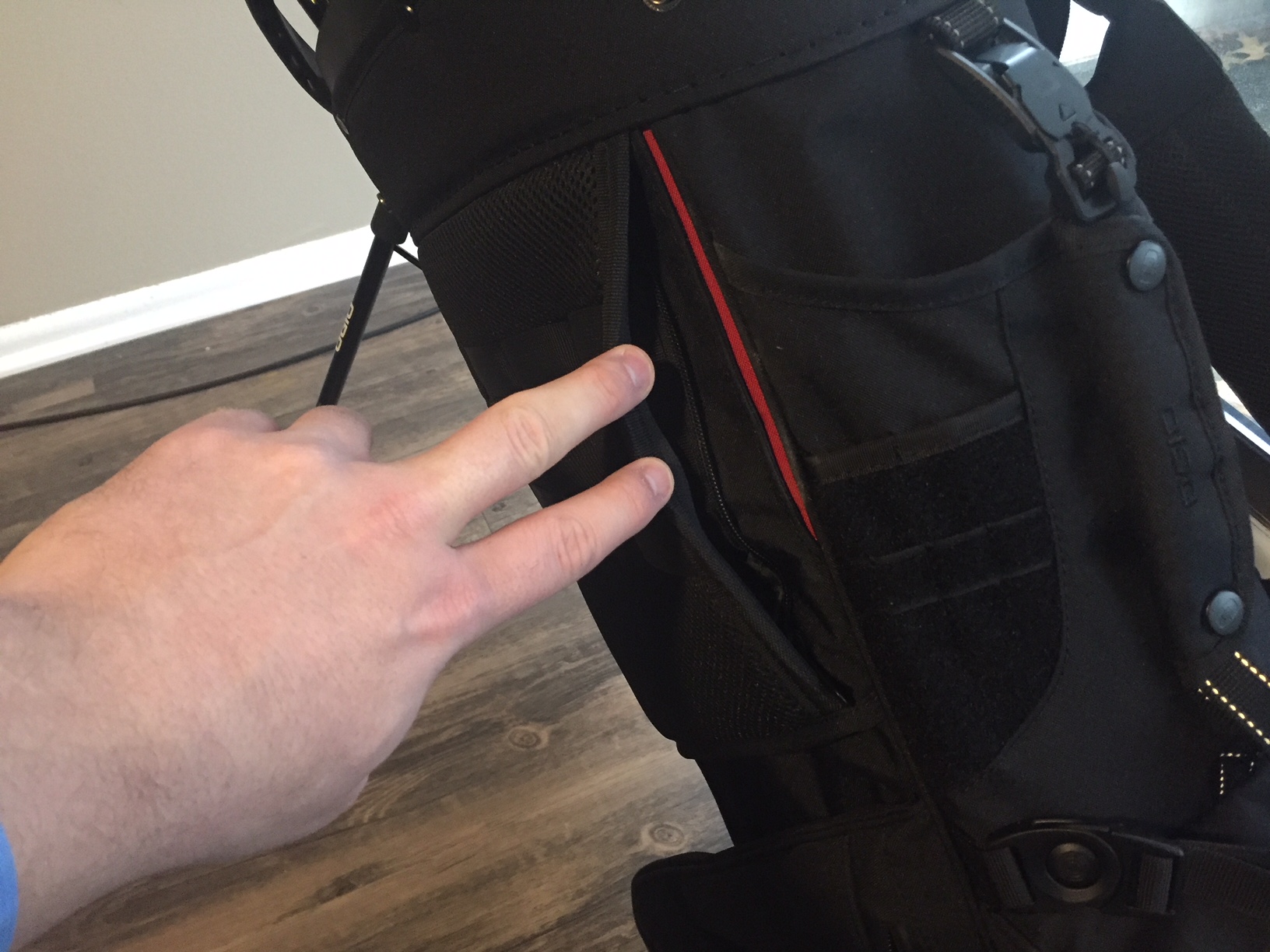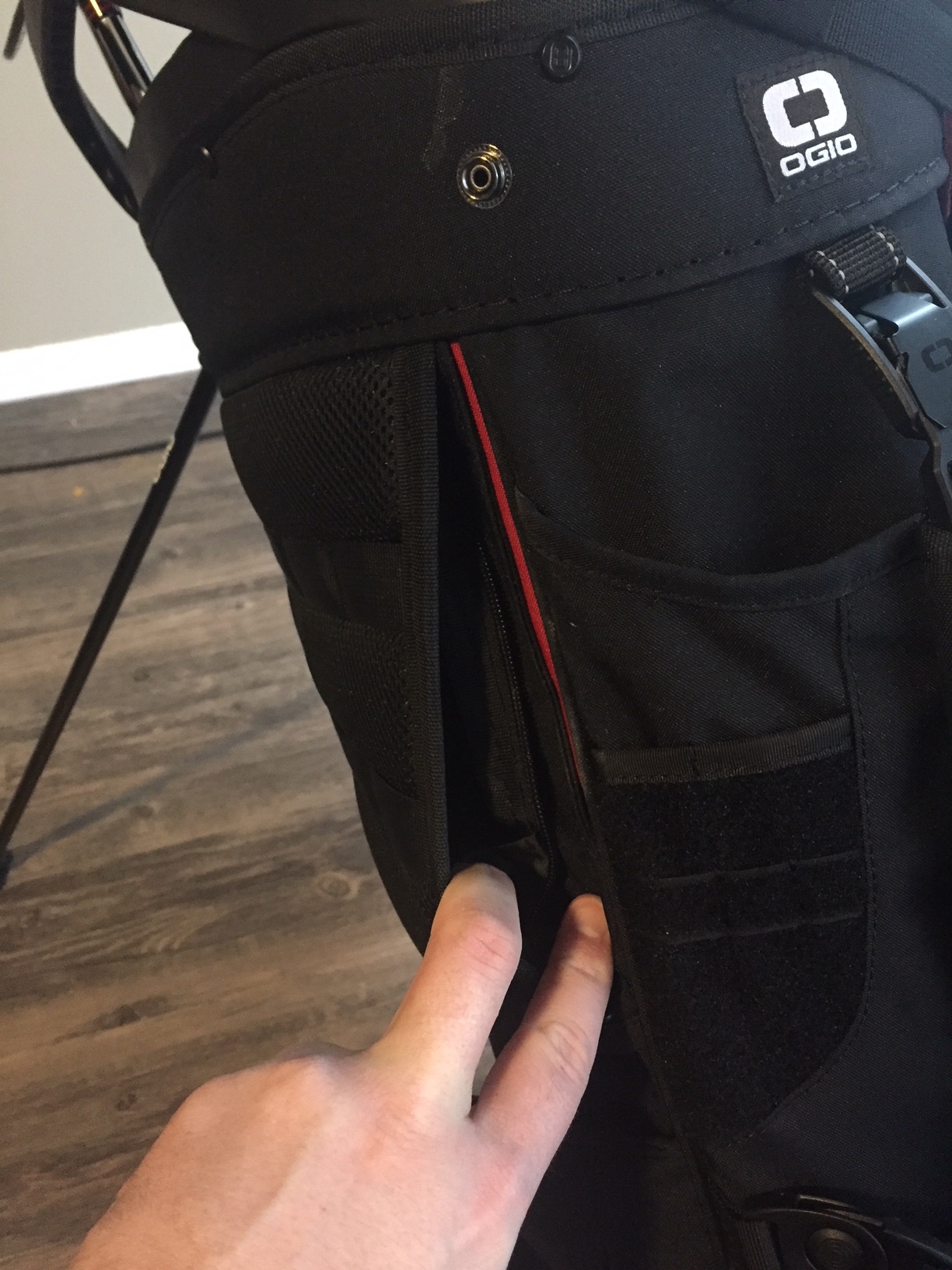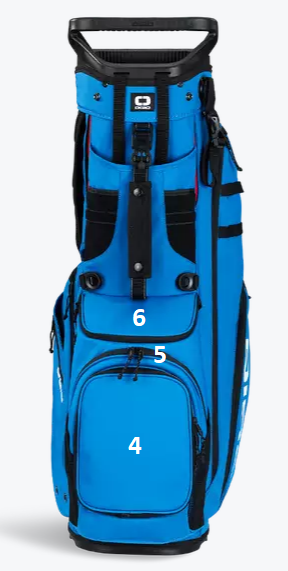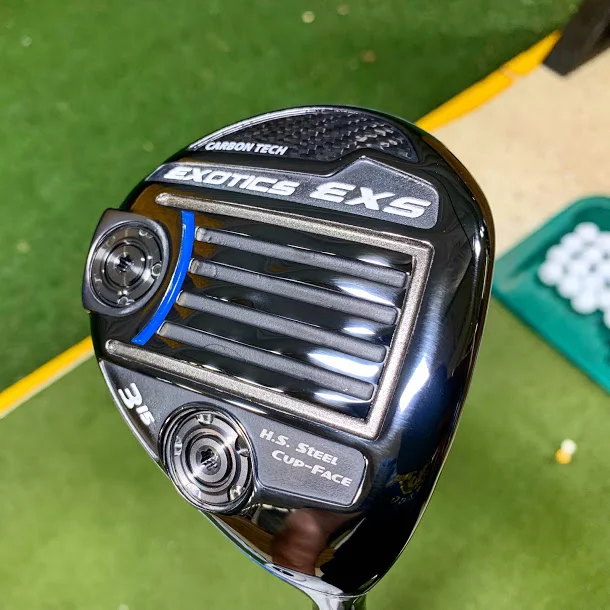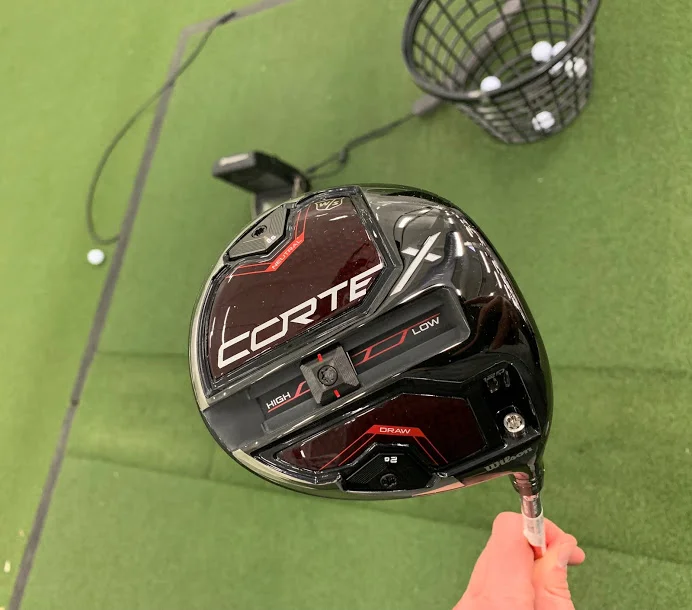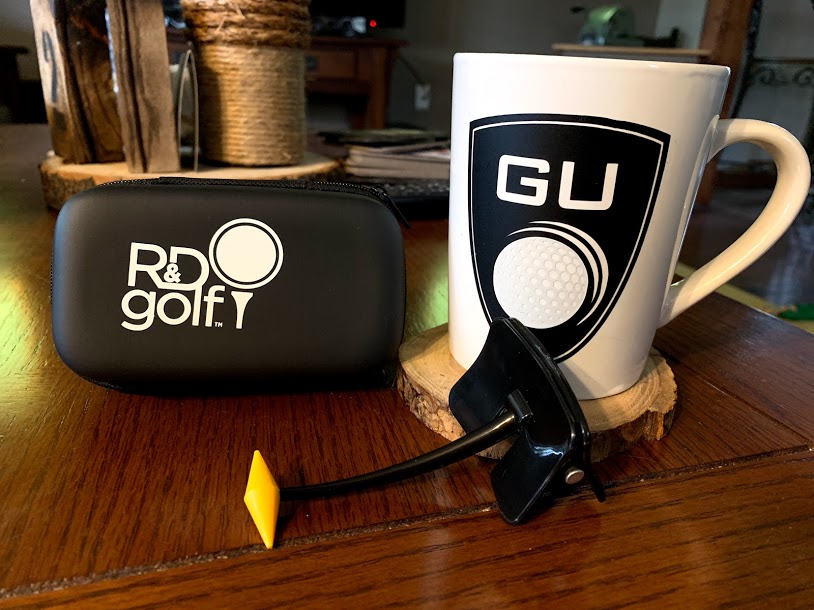TRUE Linkswear Major Golf Shoes Review
The TRUE Linkswear Major golf shoes are Tour-quality and perhaps the most comfortable shoes they’ve ever designed.
TRUE Major golf shoes.
The concept of what to expect in a golf shoe has changed dramatically over the years. No longer are we bound to the confines of saddle designs and raised spikes; comfort is a must, and brands have agree it is of upmost importance.
TRUE Linkswear has specialized in comfort for years, and their new TRUE Major golf shoes might be the finest they’ve ever produced.
Background and Technology
Is it weird to say there’s a technology aspect of a golf shoe design? We’re not talking computer chips and flashing lights, of course. However, the TRUE Majors are built in such a way that one cannot help but think “state of the art.”
Billed as their “highest performing, Tour issue model”, the TRUE Majors are strong enough to withstand any weather condition or terrain. Waterproof full grain leather and outdoor grade Nubuck suede comprise their outer layer while a lightweight midsole and comfort sock inner protect your feet from pain and discomfort. Flexibility is a focus in the TRUE Majors, making them seem as if they were built specifically for your foot right out of the box.
The unique Paracord Lacing system holds each shoe onto your feet snugly yet comfortably, providing stability throughout your swing. I hate a shoe that has sporadic “tightness” throughout the tongue due to inconsistent placement of the laces. The TRUE Majors’ lacing system avoids this problem entirely.
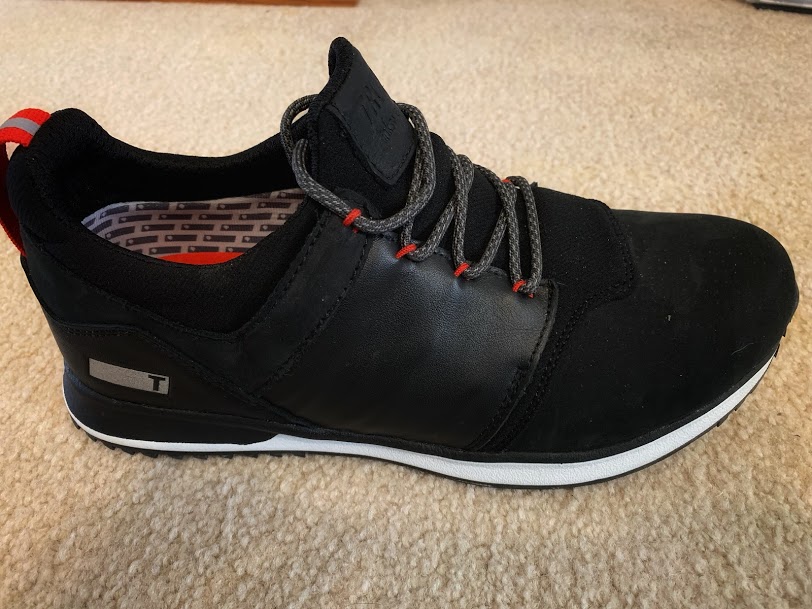
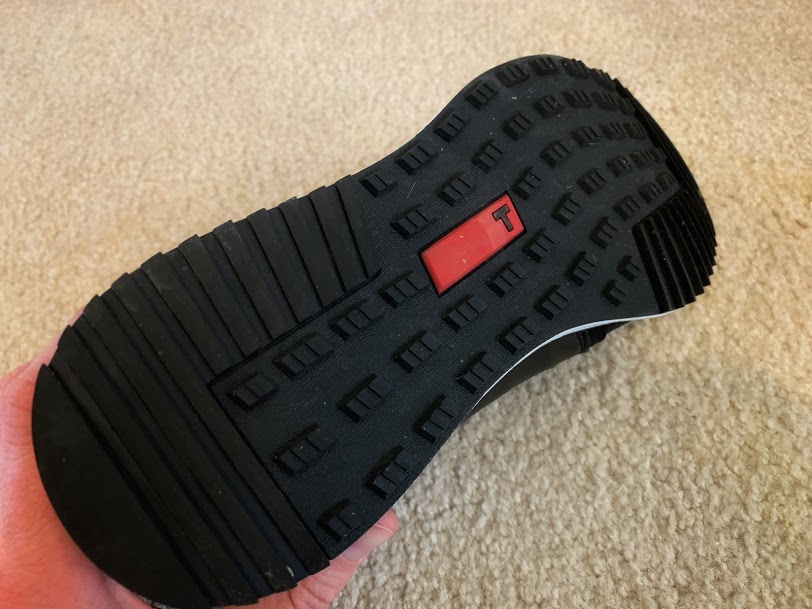
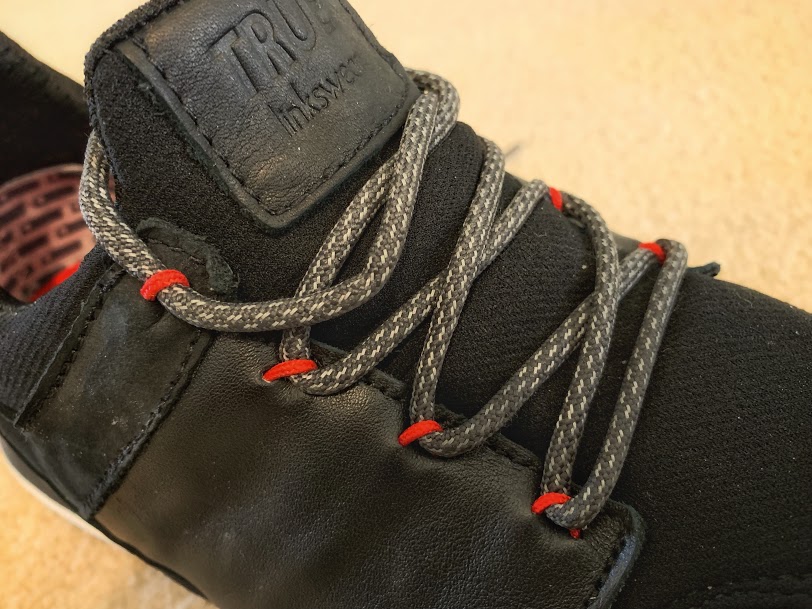
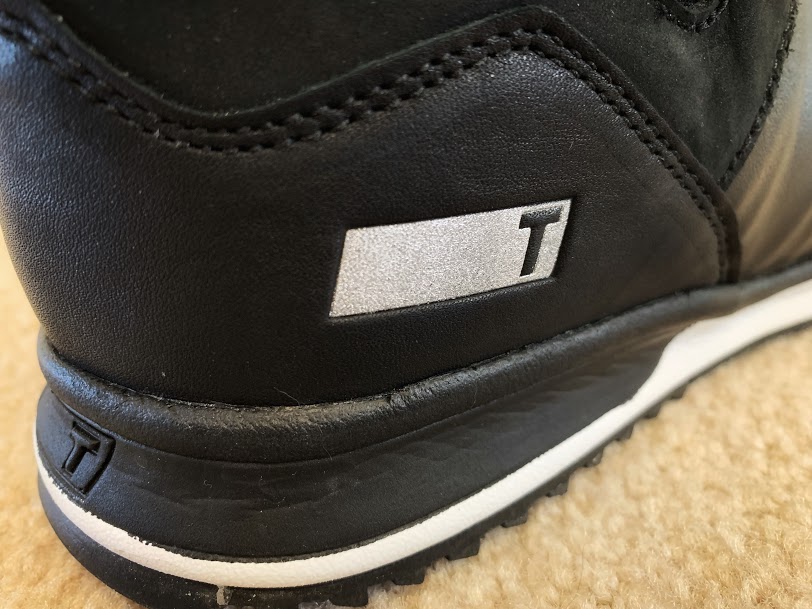
Feel and Performance
When you put on a new pair of TRUE Linkswear shoes, you expect them to be comfortable immediately. It’s simply the thing they are known for, and the TRUE Majors follow suit wonderfully.
I’ve always loved how close to the ground the soles of my feet feel when walking in a pair of TRUEs. I prefer to feel the change in terrain throughout my round, especially in bunkers and on the putting green. I don’t want a thick shoe sole that hides the contours of a golf course, and while the TRUE Majors aren’t the thinnest shoes ever, they keep me in touch (literally) with my surroundings.
The traction on the bottom of the shoe — which is much closer to that of a sneaker as opposed to your typical golf softspike — was more than adequate without feeling like I was digging into the dirt. I’m interested to see how they will perform in wet conditions, since the rubber nubs are quite shallow compared to competing designs.
As someone who likes to walk every so often during a round, I have no doubt the TRUE Majors will keep my feet blister-free. However, the thicker leather and suede outer combo seems a bit warm, which may be concerning on warmer days.
Overall Impression
When it comes to buying a golf shoe, I believe you should dress for the conditions of the day. I simply do not think there is a one-size-fits-all approach to proper foot apparel for this game. You should not wear the same pair of golf shoes for all conditions; there are simply too many great options.
The TRUE Majors, while able to be worn in any condition, are best for cooler days or soggy rounds. They are great for golfers who prefer to both walk or ride, and their construction guarantees their longevity. This is a premium quality golf shoe that will last for many seasons.
The TRUE Linkswear Major golf shoes retail for $199.99.
Callaway Epic Flash Driver Review
The Callaway Epic Flash driver is a breakthrough in golf club design. Does its performance match the fanfare and build up?
Callaway Epic Flash Driver
The future of design engineering
Every year, club manufacturers tout their newest technology as being not only better than last year’s model, but also the best on the market. The problem is, breakthrough advances in technology come far less often than annually. Year-over-year, little tweaks to club designs usually don’t provide substantial improvements to ball striking, but every 4-5 years, a new idea or new technology is introduced that paves the way for club designs going forward.
A History in Innovation
In 2004, TaylorMade came out with the adjustable weight screws in their R7 Quad, which let golfers alter the center of gravity to tailor their shot shape.
In 2009, Nike’s SQ Dymo 2 Str8-Fit (are those nuclear launch codes?) introduced hosel adjustments to provide eight different face angle and lie settings.
In 2013, TaylorMade unveiled their SLDR driver, allowing golfers to slide a weight based on a golfer’s desire to draw or fade their shots.
I could keep going, but you get the idea. About every 4-5 years, a breakthrough idea is introduced to the golfing world by one OEM, which then gets generally adopted by other OEM’s in a similar fashion going forward, being careful not to infringe on the original patents. Not including the PXG vs TaylorMade fiasco.
Golf’s newest breakthrough idea comes in the form of Flash Face Technology in Callaway’s Epic Flash.The most intriguing part isn’t the actual club design itself, but rather HOW it was designed, and how it likely will change the way golf clubs will be designed in the future.
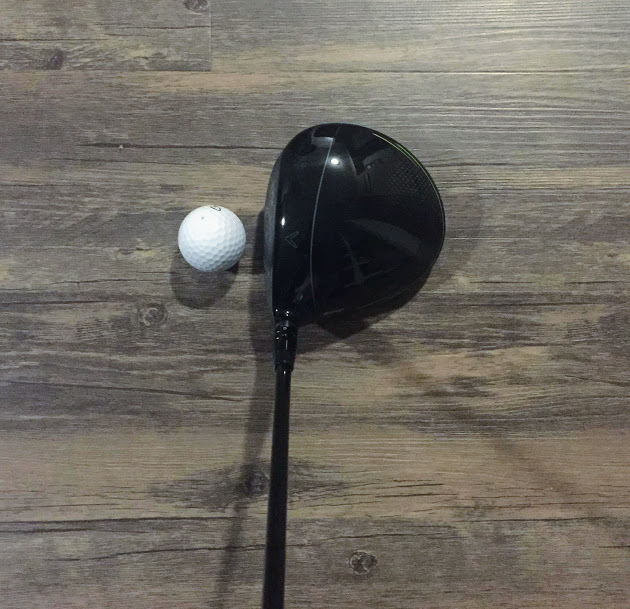
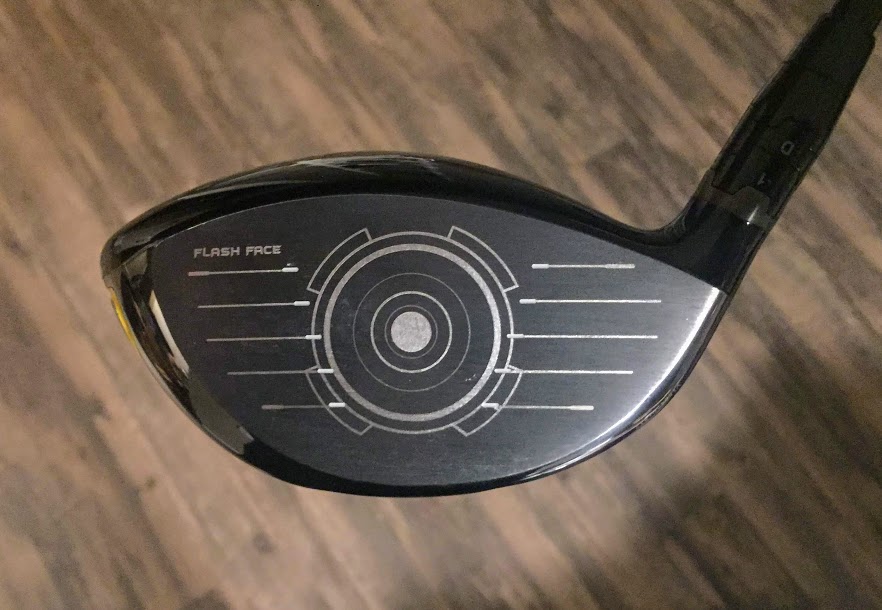
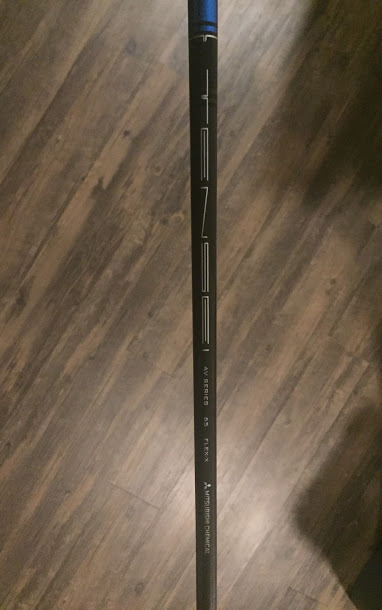
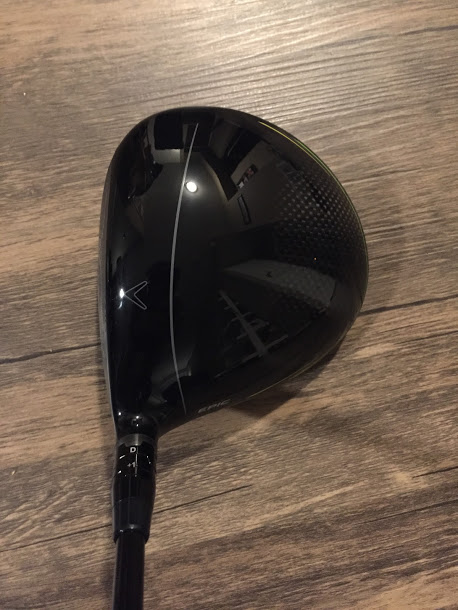
Artificial Intelligence and Machine Learning
I’ll admit, artificial intelligence is starting to scare the bejesus out of me with every YouTube video I see of robots doing backflips and opening doors. Terminator 2 is looking more like science non-fiction every waking day. Seriously, the stuff of nightmares.
But I think we have finally come across a use for AI that every golfer (and human) can get behind, and I believe Callaway has paved the way by using it to design golf clubs.
The engineers at Callaway programmed a super-computer with machine learning to analyze and test 15,000 different face iterations for the Epic Flash to optimize launch conditions. Not five… not six… not seven... fifteen thousand. The winning result is a wildly unconventional face design that almost resembles ripples of water centered around the point of impact.
Now that artificial intelligence has been introduced to perfect the club face design, it will likely change the way other OEM’s approach their club designs with their research and development teams.
Results
I have to admit, I have not been able to hit a driver consistently in what feels like years. My current driver came out maybe 5 years ago, which in golf years may as well be about 15 years. It has weighted screws that can be adjusted to fit my golf swing, with a shaft I was fitted for. It’s a solid club; I just felt I was still leaving something on the table.
Well, the first ball I hit with this club, I immediately turned back to the Golf Unfiltered OG (Adam), and we both had the same reaction. Oh… shit… this thing is HOT! The shot felt great, looked great, and sounded extremely solid. Below are the average numbers compared to my 5 year old driver:
For my game, that is pretty significant improvement because I thought I was near maxed on distance, give or take a few yards. But the number that really sticks out to me is the smash factor difference. Basically saying with the same swing speed, the ball will jump off the club face faster, which is a testament to the club design.
Overall Impression
There are plenty of websites that run the numbers through the gamut, comparing all the new drivers. If you’re basing your next driver decision solely on those numbers and those tests, be my guest. What is optimal for one golfer is far from ideal for the next. But one thing I was curious about was how often golfers replace their drivers, and I went to Twitter to test the waters.
To me, this says most golfers will replace their driver when a new idea or technology is introduced that really catches their eye from a performance aspect. 77% of golfers are swinging a driver that is at least 3 years old. If you are one of them, and wonder whether it’s time to upgrade to the newest technology, the answer is: probably to very likely.
Now, whether or not shelling out $500+ for the upgrade is worth the uptick in performance (or even within your budget) is another question. But if you are serious about your golf game and looking to take the next step, seeing a club fitting specialist should be at the top of your to-do list.
And the first driver you should test is the Callaway Epic Flash.
Matt Hackett is a former collegiate golfer and equipment reviewer for Golf Unfiltered.
Flightscope Mevo Review
The Flightscope Mevo is an accurate and affordable ball launch monitor option to improve your practice sessions.
Ball launch monitors are one of the most important pieces of technology that have sprung up over the years to improve your golf game. The Flightscope Mevo is an affordable option for golfers who take their practice sessions seriously but don’t want to drop thousands on pricer models.
Why Buy a Mevo?
Most launch monitors worth your attention come with a hefty price tag, can be difficult to set up and often require ample space to use. The Flightscope Mevo ($499) takes the market head-on by offering consistent and accurate performance at a fraction of the price of comparable units.
The Mevo’s mobile app is incredibly intuitive.
The Mevo has multiple functions to appease any player and can be used for more sports than just golf. Used in conjunction with a mobile app for any smart device, the Mevo is also minuscule in size compared to most other monitors on the market. This makes the device absolutely perfect for personal use, fitting securely in a side pocket on your golf bag.
Mevo used 3D doppler radar to record shot distances, launch metrics, smash factor and other numbers useful to your game. Flightscope also includes numerous sheets of small, metallic sticker dots that can be placed on any golf ball to increase the accuracy of spin rate outputs as well.
Finally, recent updates to the device include the option to video your swing while simultaneously providing the same metrics described above. These features combine to offer a robust technology package that make a $500 price tag that much more of a bargain.
How did the Mevo perform?
Launch monitors have a tendency to differ widely from one another due to the technologies within each device. Some brands use radar that tracks the golf ball from lift off to landing. Others use math equations to “calculate” aspects of each shot, providing more of an estimate than actual data.
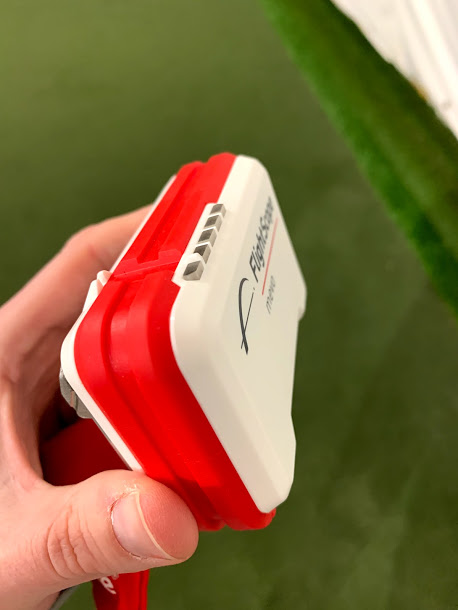
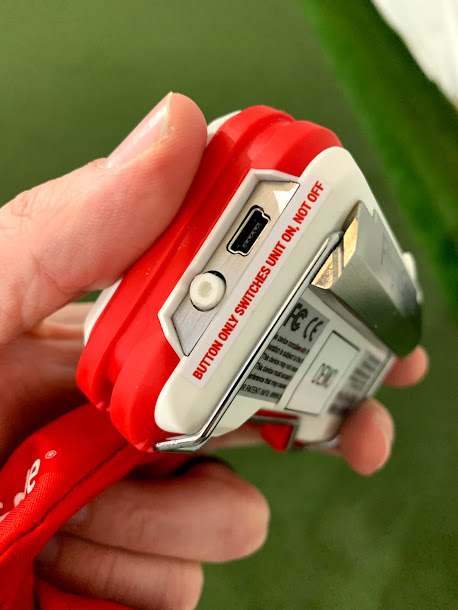
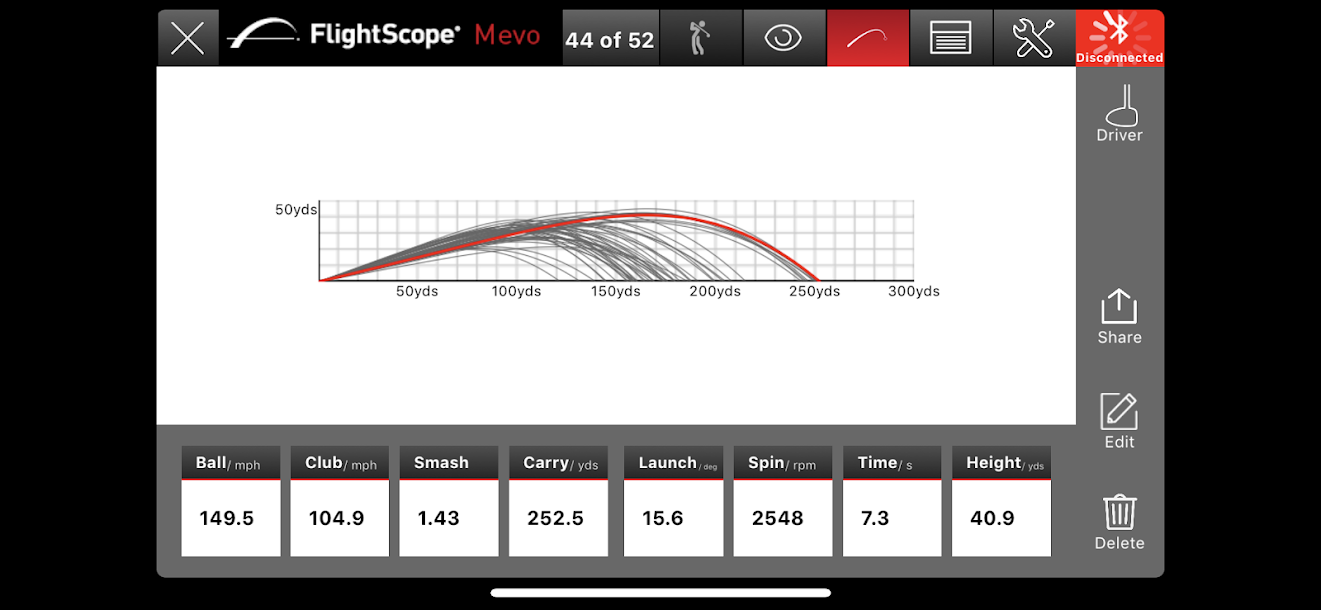
The Mevo lands somewhere in the middle. I found the unit’s ability to track my shots to be impressive, accurately capturing and reporting data in line with numbers I’ve seen on more expensive models. Trial and error taught me that aligning the Mevo properly to your golf ball prior to hitting (the provided instruction manual was very helpful) is critical to the accuracy of the data.
The height of the unit in relation to your golf ball’s height, for example, is the biggest issue I ran into while hitting from a driving range mat. If the unit is placed below the ball, the data was all over the place. Online research gave me a tip to place the Mevo on to of the device’s box to remedy this issue.
What I liked the most, however, were the features in the mobile app. Practice sessions are grouped together and stored in an intuitive manner, read-outs are easy to understand and the data is very detailed. Following each shot my smartphone would read my distance aloud via the speakers on the phone, which was unexpected and very convenient.
There were some instances, however, when I felt the Mevo wasn’t registering accurately even after setting it up correctly. This was especially true with my longer clubs, when swing speed, launch and carry distances seemed “off.” For example, a well-struck shot with 104 mph swing speed and ideal launch conditions equated to carry distances shorter than what I’ve seen on other devices.
Regardless, you definitely get more than expected with the Flightscope Mevo. The most valuable aspect is simply the ability to capture accurate data on your game, which is the most important contributor to improving your scores.
TaylorMade Spider X Putter Review
The TaylorMade Spider X putter is the tenth anniversary of the extremely popular and high performing model used by many of the world’s best players.
When it comes to classifying a golf club as “forgiving,” most of us apply this term to drivers or irons. Manufacturers like TaylorMade Golf are leading the charge to widen the scope of what we think forgiveness can mean with golf equipment. Such is the case with their new Spider X putter.
History and Technology
TaylorMade Golf introduced the original Spider putter ten years ago. At the time, its large mallet head design was a bit polarizing for golfers more accustomed to blades or smaller mallets. However, players of all skill levels understood and appreciated the forgiving qualities stability weighting and the counter-balanced design offered.
It’s always a great feeling to know a putt will roll true regardless of impact location on the putter face. And if we’re being totally honest with each other, this applies to most of us.
Fast-forward to this year’s iteration, the Spider X offers upgraded stability via a heavy 320g steel frame and a lightweight (15g) carbon composite sole that feels perfectly balanced throughout the putting stroke. Already a fan of heavier putter designs, I immediately fell in love with how easy the Spider X was to keep on a consistent path through each stroke.
Alignment aids are hit-and-miss in putter design. Some companies want to throw as much “help” on the top of a club as possible, resulting in something that looks closer to freight train graffiti than an alignment aid. The other end of the spectrum? Blank slate, absolutely no help, good luck with life.
The Spider X features True Path Alignment that blends nicely into the overall aesthetic of the clubhead design. This allows you to see the intended target line quite clearly without being distracting. It almost feels like your putting stroke is on cruise control.
Finally, the improved Pure Roll insert promotes an immediate roll after every struck putt. This is accomplished by specially engineered grooves that increase topspin, thus helping putts stay true to the target line.
Overall Performance
The TaylorMade Spider X putter is exceptionally built and performs as advertised. It’s one thing to see statements like “The #1 putter on Tour” but actually feeling and seeing the club’s benefits in real life can make a believer out of anyone.
The putter feels incredibly stable throughout the stroke, to the degree that you can actually see your putting stroke improve. The weighting throughout the Spider X is superb, feeling perfectly balanced and comfortable to control no matter how far back you take the head back.
Over and over again I found the golf ball to enter a pure roll within milliseconds after being struck. Putts remained true to the intended target line, and even misses seemed to take a peak into the cup. I’m not insinuating that my putting suddenly became more accurate with the Spider X, but I definitely noticed my putts rolling closer to my target no matter where I made contact on the face.
Impact exuded a soft, muted sound that added to the soft feel of the putter face insert. While not incredibly unique, I definitely prefer a softer feel on short and longer putts, so this feature was a welcome sight.
The TaylorMade Spider X putter is truly a fantastic option for those looking to upgrade in 2019. Available in multiple color options and shaft neck bends, there’s no wonder why the Spider X continues to be a top choice for the world’s best players.
Sub 70 Golf 639 and 699 Irons Test
We go through a Sub 70 Golf 639 irons and 699 irons review to compare, contrast, and drool over these great irons.
Sub 70 Golf is an upstart golf equipment manufacturer that brings a small town feel to a big business market. Their direct-to-consumer model enables them to price their products significantly lower than competitors, but is performance compromised for an attempt to capture a sliver of market share?
I had the chance to test the Sub 70 Golf 639 and 699 irons recently, comparing them to what was currently in my bag. After the dust settled and the results were analyzed, it is clear that the Sub 70 irons performed as strong as higher priced competitors.
What Was Tested?
This comparison test was conducted at Mistwood Golf Dome, which is a driving range equipped with Top Tracer Range technology. This is the same ball launch monitor tech seen on professional golf telecasts and includes metrics on ball speed, carry yardage, launch and other factors.
The Sub 70 Golf 639 cavity back irons and 699 forged irons were compared to my current gamer cavity back irons. All clubs featured shaft profiles extremely similar (if not the same) to one another. For transparency, the 699 lofts are an average of 3-degrees stronger than both the 639’s and my gamers.
Shots were hit with each club in rotation, starting with my gamers as a baseline. The 639 irons were hit second, followed by the 699 model. A six-iron was used from each brand.
Sub 70 639 CB Forged Company Description
The Sub 70 639-CB Forged Iron is a workhorse for the player who seeks distance and control while retaining feel. It is precision forged and milled from a solid billet of DT-4 soft stainless steel for unparalleled feel and responsiveness off the face. The club is designed with a rounded leading edge and sole design to provide better turf interaction for the player who needs forgiveness, and the player’s style cavity back provides additional margin for error while not eliminating workability.
The 639-CB provides the best of both worlds, allowing for creativity and shaping of shots while providing the necessary forgiveness to the player in need.
Sub 70 699 Company Description
The Sub 70 699 is for the golfer that requires the newest technology in game improvement without sacrificing looks and shot making ability. The manufacturing process was fine tuned to provide the hottest face and the largest sweet spot attainable without sacrificing looks and playability. The precision milled face is a 1.7mm wide sliver of 455 Carpenter Steel, allowing for maximum compression and face flex for added ball speed, even on mishits. The hollow bodied head is injected with TPE, a resin like substance that stabilizes the face and creates improved feel and sound at impact.
The 699 is the successful culmination of Sub 70's desire to offer an iron that uses the latest in game improvement technology but retains the sleekness of a traditional player's club, inspiring confidence at address and power at delivery.
Data Snapshot
As you can see by the data snapshot above, which includes data from all three club types, there are a few clear differences. The longest distances recorded in the pictured sample were produced by the Sub 70 699 iron. This was expected, of course, as the standard loft in this model is 27-degrees; stronger than the other two irons. Launch was also higher throughout the test in the 699, which speaks volumes for the clubhead’s weighting design.
While not immediately clear in the snapshot above, the 639 irons and my gamers performed almost identically over the course of the entire test. In fact, I would go so far as saying the 639 cavity backs felt, sounded, and produced numbers I could begin playing tomorrow without noticing any difference from my current set.
Ball speeds across all three irons were similar, with higher speeds going to the stronger lofted 699 irons.
A quick note on Top Tracer’s roll distances: they are quite absurd. There’s no way any of the balls hit would roll that far hitting a mid-iron, so carry distance should be the main focus here.
Overall Impression
It is human nature to think if a product is priced nearly 50% cheaper than a competitor, performance is going to be significantly different than the more expensive option. You may automatically assume it will be much worse before trying it for yourself.
This is especially true — and in most cases, accurate — in the golf equipment industry. Value brands are available everywhere, and their technology/design characteristics are comprised of cheaper materials or manufacturing processes. These are fine options for the beginner or casual player.
The direct-to-consumer model flips that perception on its head. Eliminating third-party “interference” not only allows companies to get clubs into your hands faster, you also avoid any price mark-ups along the way.
Sub 70 Golf understands this well, and while their products are designed and constructed of materials that may not be as flashy or well-advertised as other brands, my test found that the end products perform just as strong as what I am currently playing.
This is not to insinuate that there is lesser value to products that cost more due to design characteristics, materials, or Tour presence. There are reasons why those clubs are widely used by the world’s best, and the intent of this review was not to shame anyone for preferring those options. However, it is clear that when the combination of performance and affordability matters (and when doesn’t it, really?), there are other options available to the consumer.
We will be doing much more with Sub 70 Golf throughout 2019, but our first impression of their 639 and 699 irons has been highly positive, especially when compared to what I’m currently playing.
The Sub 70 639 CB Forged irons retail for $514.00 (5-PW).
The Sub 70 699 irons retail for $428.00 (5-PW).
Artificial Intelligence and Callaway Epic Flash
Will new drivers like the Callaway Epic Flash be designed by tech like artificial intelligence moving forward? Equipment expert Michael Vrska explains more.
The technology, research and science that goes into new driver designs can be equally staggering and inspiring. The Callaway Epic Flash driver, for example, was designed using artificial intelligence that ran through more than 15,000 iterations before finding the perfect result.
As golf club expert Michael Vrska explains in this Tech Talk segment for The Hackers Paradise, much has evolved in golf club design over the years. What other techniques are being used by the industry’s biggest brands? What might we expect in terms of further tech advancement?
Golf Iron Sole Design and Bounce Explained
In a special video segment for THP TV, golf equipment expert Michael Vrska explains why you should consider iron sole width and bounce in your irons.
How often do you think about the sole design, thickness, and width of your irons? Probably much less than that of your wedges, and there’s good reason for that. Most golfers only think of bounce when purchasing a new sand, gap or lob wedge… and usually after loft.
Last month Adam from GU had the opportunity to travel with our friends at The Hackers Paradise to the 2019 PGA Merchandise Show in Orlando. In the Tech Talk segment below, Adam interviews golf equipment expert Michael Vrska on the importance of understanding sole width and bounce throughout your bag.
Miura CB-301 Cavity Back Irons
Miura Golf’s new CB-301 irons are a gorgeous addition to a product line that prides itself on design and performance. Here’s a first look at the newest cavity backs from Miura.
Miura Golf has always been known as one of the finest iron designers and manufacturers in the world, so when a new release is announced the golf world pays attention. Their new CB-301 cavity back irons are no exception.
Announced in mid-January and available now for purchase at all major club fitters and the Miura Golf website, the CB-301 irons are a thing of beauty. What else would you expect from the company who boasts past designs like the MB001? The newest member of the Miura family fits in nicely and continues the tradition of stellar looks while promising equally impressive performance.
“We are excited to bring a new level of distance and performance to Miura Golf,” said Hoyt McGarity, President of Miura Golf. “With the CB-301, we’ve created the finest forged cavity back in Miura’s history.”
Getting a close up of the CB-301 irons was a treat at the 2019 PGA Merchandise Show. Miura has a knack of designing clubs with a stellar first impression, and these irons plated in nickel chrome touched with a satin finish are absolutely striking.
Designed for players who need a little more forgiveness and distance, the CB-301 is the longest forged cavity back Miura has ever produced.
Design characteristics steeped in tradition yet flexible enough to welcome innovation is what sets this company apart from others. The CB-301 is constructed to optimize performance for a wide range of golfers, bringing the classic forged feel of a players’ iron in a package that is playable by all handicap levels.
Stay tuned to this site and our podcast for a deeper dive into these incredible clubs. In the meantime, visit Miura Golf’s website for more information.
5 Takeaways from the 2019 PGA Merchandise Show | Episode 190
Adam recaps his week at the 2019 PGA Merchandise Show in Orlando, FL, including five things he learned from the show floor.
Adam is back in frigid Chicago after spending a week in Orlando with The Hackers Paradise to cover the 2019 PGA Merchandise Show. Here are five takeaways from the week.
2019 Srixon Z-STAR and Z-STAR XV Golf Balls
The new Srixon Z-STAR and Z-STAR XV golf balls feature upgraded tech in their cover and core, which is sure to help golfers of all skill levels.
Srixon’s newest golf balls for the 2019 season are ready to hit store shelves on February 1st, and after spending time with them on the golf course putting them in my golf bag was an easy decision.
Let’s dive deeper into the 2019 Srixon Z-STAR and Z-STAR XV golf balls.
FastLayer Core
When the longest driver on the PGA Tour — Cameron Champ — talks about the performance of a golf ball, it’s best to stop and listen.
“Distance is one of the major strengths of my game, and I trust the performance of the Z-STAR XV like nothing else on Tour,” said Champ, who currently leads the Tour in driving distance. “The exceptional ball speed and distance that I’m able to generate with the Z-STAR Series gives me the unique opportunity to compete at an elite level week-in-and-week-out.”
While none of us can hit the ball like Champ, we can benefit from the new Z-STAR series thanks to tech like the FastLayer core. Starting softest in the core’s center, the FastLayer gradually hardens outward toward its perimeter. This boosts ball speeds to help those of us who need it, but maintains a soft feel at impact.
“The new Z-STAR Series golf balls are built on top of the heritage of one of the most successful, trusted Tour golf balls in the market,” said Jeff Brunski, Vice President of Research and Development. “The exceptional ball speed and distance of both Z-STAR offerings are driven by the new FastLayer Core technology, producing both outstanding ball speed and launch conditions tuned for the high swing-speed, better player.”
Slide Risk Material (SeRM)
One of the elements I love the most about Srixon golf balls are their incredible durability. The new Z-STAR series features an upgrade to an already fantastic outer layer by way of Spin Skin technology with the new Slide Risk Material (SeRM).
This upgrade allows your irons and wedges to really dig in to the golf ball without ripping the cover to shreds. This increases friction between the clubface and golf ball, equating to higher spin control and stopping power on all shots. I found this to be especially true around the greens where spin is needed most, especially on high-lofted pitch shots or flops out of a bunker.
Early Performance
While more time is needed with the Z-STAR and Z-STAR XV golf balls, my early first impressions are extreme positive.
Even on a cold Chicago day, both golf balls performed exceptionally well in terms of spin and distance off the tee. I found driver roll out to be more than adequate in softer conditions while shots into the green stuck and spun back (!) in some instances. I’m a pretty high-spinning player by nature, but seeing a ball suck back is always a cool sight.
Retail will be $39.99 per dozen for either model. For more information visit Srixon’s website here.
How to Follow Us at the 2019 PGA Merchandise Show
Here are all the details you need to know to follow along with Golf Unfiltered and The Hackers Paradise at the 2019 PGA Merchandise Show in Orlando, FL.
In a little over 24 hours I will be traveling to Orlando to join my friends from The Hackers Paradise to cover the 2019 PGA Merchandise Show. As I mentioned in our recent podcast, this will be my first return to the Show in over five years.
In a format not found anywhere else, you will be able to follow along with our Show experience every step of the way. Below are all the details you need to join us during the golf industry’s biggest event of the year.
Get Involved in the Action
Your primary source for 2019 PGA Show coverage is over at THP as we combine our teams to bring fresh, real-time event coverage from 7am to the late evening every single day. You will feel as if you’re right there with us as we experience all the PGA Show has to offer. You’ll be able to do so in a number of ways:
THP Forum Live Update Thread: This will be filled with pictures, information and everything else our teams see during the event. This allows two-way engagement between our team and our collective readers making it easier for you to ask us questions and offer opinions on each booth we visit. Jump into the mix, get involved, in real time. View the thread here.
Stories on Instagram: Be sure to follow both @GolfUnfiltered and @THPGolf on Instagram to see our Stories for behind-the-scenes action, candid interviews and things that won’t make the live update thread.
THP Live on YouTube: THP also hosts their ongoing web series, THP Live, and the PGA Show will be no different. Join us as we broadcast live on YouTube via THP TV for round table discussions on new equipment and industry news multiple days of the week. You can ask questions directly to the staff on anything PGA Show or equipment related. Interact with the people that are there, in Orlando, as if you were sitting right there with us. This is your chance to hear answers to all your questions from the mouths of the experts. Follow that at www.youtube.com/THPGolf.
GU and THP on Twitter: And of course, you can follow both sites on Twitter as we share images, booth shots, and more on @GolfUnfiltered and @THPGolf.
Current Trends in Golf Equipment and Golf Social - January 2019
Emerging trends in golf and on social media include golf course architecture and direct-to-consumer equipment brands. Read our thoughts on both here.
As the world of golf prepares for another calendar year, the ever-growing atmosphere surrounding the game continuously breeds trending topics that are equally entertaining as they are frustrating. As I’ve done in various ways before, taking the temperature of these trends is always a fun exercise and it allows me to invite you, the reader, to engage in a conversation on a number of topics.
In this piece, I’ll offer a few brief thoughts on the popular golf course architecture (GCA) social chatter and how smaller golf equipment brands are competing with larger original equipment manufacturers (OEMs). I encourage you to leave your thoughts in the comments below, or reach out to me on Twitter at @golfunfiltered.
Golf Course Architecture and Enjoying The Game
Is there such a thing as the “perfect golf course?”
As with most things in life, the answer to this question is highly personal. You may have grown up near a public course that’s as flat as a pancake, featured minimal bunkers (let alone playable sand in said bunkers), and no discernible difference between fairway and rough. Or you may have scoured the globe playing the finest private clubs of which most of us can only dream.
The goal remains the same for either scenario: to find enjoyment in a game that can be frustrating as hell yet more rewarding than you’d imagine.
Golf as an activity is unique in that it requires massive plots of land to play and enough variability to keep people coming back for more. And, as people are wont to do, opinions abound for every course in an attempt to persuade others that one is better than the other.
Enter GCA social media enthusiasts.
At its core, this emerging subculture of golfers is highly engaging, incredibly educational, yet entertaining enough to sit back and observe. Admittedly, GCA is the topic I know the least about in golf, and websites like The Fried Egg or Garrett Ford’s excellent blog provide primers for people like me who want to learn more. Similarly, voices like Tony Dear offer a constant resource on Twitter who fields questions daily on the topic.
However, I fear there is a meticulous regression away from what can be an invaluable educational resource toward a mentality that borders on snobbery. Pockets of GCA supporters have fallen into the contrarian attitude that everything they like is correct while your opinions are shit. In fact, actual golf course architects fall under intense scrutiny for design features on new builds or renovation projects.
Who the hell do we think we are?
Readers of this site know I am not shy with expressing unpopular ideas nor immune to the (highly deserved) backlash from expressing those ideas. However, I fail to understand the point in denigrating others for their preference in course design in what seems to be an attempt to catch the attention of larger media outlets who’ve built a following of the same contrarians.
There’s a really good chance that experienced architects who are repeatedly hired to work on the world’s greatest courses know what they’re doing. Call it a hunch.
Direct-to-Consumer Model Growing in Popularity
Speaking of experts knowing what they’re doing, another trend we’re seeing in the golf equipment space is soaring prices for new products from the game’s biggest OEMs.
January is always a popular time for gearheads like myself as brands like Callaway, TaylorMade, Cobra, Wilson, and others announce new club technology and release dates. This creates a ton of buzz leading into the annual PGA Merchandise Show in Orlando, which is the largest convention in the golf biz.
Being the market share leaders year after year, these brands can pretty much charge whatever they need to cover the costs of R&D, materials, and player sponsorships associated with their new product. Consumers continue to pay, even as driver prices have eclipsed the $500 mark and irons creep toward $2000 a set. What this has done, however, is open a window for boutique brands to offer high performing alternatives at half the cost.
Brands like Hogan Golf, Sub 70 Golf, Snell, Vice, and multiple others have embraced the direct-to-consumer model to cut out middlemen (middlepersons?) and offer insanely low pricing to players of all skillsets. For example, Hogan offers their incredible Ft. Worth Black irons for under $800, whereas similar sets with comparable tech will easily set you back $1200 or more. Sub 70 does the same at a price point that falls below $500 in some instances.
There are trade-offs, of course. The largest of which is custom fitting, which OEMs rely on for an advantage. To the best of my knowledge, a minimal number of DTC brands can be found at brick-and-mortar clubfitters, thus preventing golfers the opportunity to have a set customized to their game in a timely fashion. Taking a leap of faith before spending hundreds of dollars on product that might benefit your game isn’t ideal.
Regardless, and despite the number of writers like me who constantly push the importance of getting custom fit, consumers who actually do so are in the minority. The cost of a fitting is not cheap. Add that on top of the cost of equipment and you’re looking at a “you’re sleeping on the couch for a month” investment risk.
Marriages have ended for less.
In all seriousness, consumers will always trend toward walking into a store or viewing a website and purchasing something they think will work for them. It’s easier, it’s faster, and it’s cheaper. Golfers who already know their fitting specs are at an advantage.
The further OEMs head in one pricing direction, the wider the window of opportunity opens for direct-to-consumer brands to flourish.
REVIEW: OGIO Alpha Convoy 514 RTC Golf Bag
The OGIO Alpha Convoy 514 RTC golf bag is a hybrid offering for golfers who prefer to ride but want more options than the normal cart bag.
The new OGIO Alpha Convoy 514 RTC golf bag is a hybrid option for players who want a little more space than what normal stand bags offer, but don’t want to jump to a full cart bag.
No two golfers are alike. Some love their long irons, and some love their hybrids. Some prefer a high spinning ball, while others place a priority on more distance. Some care about the little details of their golf game, and some just grip it and rip it… and then shotgun a beer on the tee. Or vice versa.
To each, their own.
Now I will admit that when I golf, I take a cart 99% of the time. Instead of trying to talk myself into how I should occasionally walk for my own health, I will skip the self-intervention and just roll with, “it is what it is!” So personally, I don’t need a lightweight golf bag with a great dual-strap system. I need a golf bag that works well on the back of a cart.
Note, not every piece of golf equipment made is designed for ALL golfers, despite what the OEM’s will tell you. And that’s…. OK! Golf bags are no different. Some golfers need a carry bag. Some need a cart bag. Some care only about how their golf bag looks. Some prefer functionality over style. But if you are a primary cart rider and appreciate the little details about a golf bag, then you’ll love the OGIO Alpha Convoy RTC (Range-To-Cart) bag.
Super Slick Shoulder Strap Stowaway System (SSSSSS)
Not only a tongue twister Shelly the Seashell Seller would be proud of, but this is one of the cooler and more unique parts of this bag. If I’m fishing through my bag pockets for my third provisional (errr, second mulligan), I have to throw the hanging shoulder strap from side-to-side to access the pockets. Once you put your bag on the cart, future you will surely appreciate the 10 seconds it took (yes, I timed myself) to detach the bottom strap and slide the strap into the hidden compartment so it won’t get in the way all round. Like I said, it’s the little things you will appreciate with this golf bag.
Abundance of storage – 8 zippered pockets
If you’re in the market for a bag designed specifically to strap on the back of a cart, you shouldn’t be concerning yourself with keeping it super light. Which means, stuff that bag full of everything you think you may need on the course.
There are eight different pockets with enough storage to keep the floor of your trunk spotless. Rain gear. Extra gloves. Balls galore. Go ahead and splurge for that bag of 500 tees, you’ll have plenty of room.
Speaking of which… what a great time to discuss the golf bag essentials! Some obvious choices, but also a few obscure items you will be thanking me for before the season is over. Also, I threw a few ideas out there as to what I would use the pockets for:
“Hidden” Upper Left – Valuables
Bottom Left (Long) – Extra Towel
Bottom Left (Diagonal) – Smaller items (Sharpie, Sunscreen, Bug Spray, Clip of Business Cards) WB – Insulated Water Bottle Holder
Middle (Rectangular) – Brand New Golf Balls, Ball Markers, Divot repair tools
Middle (Curved) – Used Golf Balls/Water Balls
Middle (Top) – Tees
Bottom Right – Extra Socks, Extra Glove (stored in a Ziploc bag)
Full Length Right –Rain Gear (Jacket, pants) or full 24 pack of Coors Light
Top Right (Interior) – $50 in small bills, few coins
Velcro Glove Holder
I am one of those golfers that straps my glove onto the outside of my bag, so after my round it can sufficiently dry out. The exposed Velcro on the side of the bag easily holds my glove between rounds, or even between shots.
PSA #1: Don’t be that guy that balls your glove up and shoves it in a pocket after a round.
Legs Included!
Many cart bags don’t have standing legs, so when you carry your bag to the range (or the clubhouse), you are rolling the dice and hoping it will be standing upright when you come back to it. There aren’t bag stands everywhere you go around a golf facility, so having the freedom to put your bag down knowing it won’t fall over with a slight breeze is a very nice plus.
PSA #2: Don’t be that guy that has his stand bag blow over in front of everyone at the range. I guarantee they are all laughing in their head and calling you a newb. And no one needs all that additional pressure on the 1st tee.
Wide Putter Column
It seems putter grips keep getting bigger and wider these days, so if you have a putter grip the size of a pringles can, you will love the extra wide putter column with this bag. Easy in, easy out.
Detachable Valuables Pouch
I have seen many rangefinders hanging from the side of an unattended golf bags at the course, and wonder how easily someone could just grab it and run. One would HOPE that you wouldn’t have to worry about that, but if you’re playing at a local muni, you just never know. This bag has a nice pouch you can keep your valuables in, which easily detaches from the bag so you can take it wherever you go. Now, if you still leave it in the locker room or at the bar, that’s on you!
Plastic Rim
Another small detail I really like is the multi-functional plastic rim around the mouth of the bag. Not only does it make it easier to grab and pull the bag up vertically, but it’s a great towel holder instead of sliding it between two clubs. I don’t know how many towels I have lost by placing it between two clubs, then pulling one of the clubs, and then later trying to decide whether or not it’s worth it to drive back and two holes to get it.
Insulated Bottle Holder w/ Drainage Ports
Pretty self-explanatory, but it’s still a nice feature to have.
Extra Durable Fabric
Also self-explanatory, but nothing is worse than having a bag that rips after just one season. The Cordula poly material used to make this bag is made from discarded and recycled plastic, which feels extremely strong and durable, and should last for many seasons.
Overall Impression
If you a golfer that almost always rides a cart yet haven’t found a reliable and versatile bag to fit your needs, you need to consider this bag. Once you load it up with all of your gear, you will never find yourself on the course wishing you had room for your rain gear and dry towel. You will be sure to appreciate all of the small details that went into designing this bag, and will last you many years to come.
(Review conducted by Matt Hackett. Follow Matt on Twitter at @matthewliam.)
REVIEW: Tour Edge Exotics EXS Fairway Wood
The Tour Edge Exotics EXS fairway wood promises high-end performance at a low-end price point. Does it deliver? Read our review here.
Tour Edge Exotics EXS Fairway Wood
Pound for Pound, Worth Your Time
The Tour Edge Exotics EXS fairway wood is the higher-spinning, more forgiving cousin to the company’s excellent CBX line. Comprised of high-end materials at a lower price point than its competitors, the EXS makes a strong case to be the surprise offering of 2018.
Background
Officially released in November 2018, the EXS boasts a build featuring materials like carbon fiber and high-density steel that are usually found in the Big Boy OEM products. As such, those clubs are usually priced upwards of $300 for fairway woods due to the higher operating margins the keep the lights on at the larger brands.
Tour Edge decided to flip the script and tighten their margins in an attempt to gain market share in this space. Priced at a more affordable $230, the EXS still features all the bells and whistles you’d expect in a modern high-performing wood.
The loaded-with-technology fairway metals feature a Flight Tuning System (FTS) that includes 11- gram and 3-gram interchangeable weights, Cup Face Technology with Variable Face Thickness (VFT Technology) for an expanded sweet spot, multi-material usage of Carbon Fiber for ideal weight distribution and a new and improved SlipStream™ Sole for faster clubhead speed through the turf.
At the end of the day, however, consumers will flock to trusted names — or those who have the highest marketing budgets. To overcome this competition, Tour Edge needed to hit a home run with their newest line.
Appearance and Feel
The Tour Edge Exotics EXS fairway wood looks clean, professional, and minimalist. The club’s crown features the popular carbon fiber pattern than blends nicely into a deep black finish throughout the clubhead. Dark blue accents surround the club, adding to its overall attractiveness.
The sole of the EXS is a little busy due to the waved ridges in the heart of the club, and the interchangeable weights accentuate this feature due to their placement. These weights — 11 grams in the heel and 3 grams in the back of the club — can be switched to adjust launch and spin conditions. Tour Edge also sells additional weight options to customize the club to your needs.
The clubhead is slightly larger than I would prefer, but the deep face and low profile is fantastic. The club looks like you can hit it from any lie, scooping the ball out of a divot or digging it out of deep rough.
At impact, the EXS feels and sounds crisp and solid. I love a subtle crack instead of a high-pitched “ting”, and the EXS does not disappoint. There is a slight change in sound on miss-hits, which is to be expected but doesn’t become distracting. I need to know when I missed the sweet spot; not everyone else around me.
Performance
I was impressed by the performance of the EXS. Using Top Tracer Range technology at Mistwood Golf Dome, the EXS produced an average yardage of 249 yards with ball speeds averaging 140 mph. Launch conditions were also solid, with 13 degrees of launch and a peak height average of 33 yards. These numbers are similar to my current gamer.
Most impressive was the club’s forgiveness. Shots off the heel or toe found their way back to mid-line nicely, resulting in an average of 5 yards off center.
Overall Impression
When I initially heard about Tour Edge’s thin margin approach in the design of the EXS, I felt nervous for a local brand that’s been garnering a lot of attention. After trying the club, that feeling changed to cautious excitement.
There’s no doubt the EXS delivers on what it promises. It performs just as well as higher-priced competitors in most metrics, and its lower price point should be screaming at you to purchase one tomorrow. But we all know that consumer (us) can be tricky to figure out.
Brand image is a tough nut to crack, and smaller brands need to do all they can to earn your trust— and dollars. I can’t be any more direct than to say the Tour Edge Exotics EXS fairway wood is absolutely worth your consideration, and if running neck-and-neck to another option, will likely be less harsh on your wallet.
REVIEW: Ben Hogan Ft. Worth Black Irons
The Ben Hogan Ft. Worth Black irons not only look beautiful, but hold their own in both performance and feel. Read our review here.
Ben Hogan Ft. Worth Black Irons
Beauty, precision, and unmatched feel
(Editor’s note: This is the debut review from GU writer Matt Hackett. Matt is a 3-5 handicap, former collegiate golfer, and has a driver swing speed of 115mph)
Back when my handicap was at its best (2001, age 18), I was hitting hundreds of range balls and playing 3-4 rounds per week, enjoying the plethora of time pre-adult life allowed to spend at the golf course. Back then, us “cart boys” would gladly take advantage of the golf course and range privileges, in exchange for cleaning some guys clubs for the first time since they bought them.
That summer, I remember perusing the used clubs at a second hand golf store, and was immediately drawn to the Ben Hogan ’99 Apex Blades. My eyes lit up in equal parts awe, excitement, and suspicion, in that order.
They were beautiful. Clean. A work of art.
A set of irons I could only dream to put in my bag, if not for the $400-$600 going rate for premium clubs, so I was a bit wary of the $250 price tag. It surely had to be a mistake, especially the -50% (condition) sticker. When I brought the famous “E” wedge up to the counter to ask about the sticker, the cashier had the same suspicious look on his face. As he looked it up in the system, shrugged his shoulders, and told me the price pulled up as $125, I ran to grab the rest of the set and peeled out of the parking lot before he could look further into the matter.
I remember hitting range ball after range ball for months with those clubs until I had laborer-like calluses. They were so pure and so true, practicing became more of a joy than a chore, which is why they stayed in my bag for 15+ years. That was when I was first introduced to the Ben Hogan brand, and the story of my first true love.
While I have been playing blades ever since those Hogans, gone are those days of being able to consistently hit the nickel-sized sweet spot swing after swing. I will admit my ball striking hasn’t been as solid as it was back in the day, but I’m not looking to secure my tour card. I will stubbornly sacrifice a little club forgiveness for the look and feel of a blade.
Most blade irons are designed to have majority of the weight in the sweet spot of a club head, tapering a bit towards the heel and toe. This is probably the perfect club design for tour pros that are able to consistently hit that nickel-size sweet spot: put the weight of the club where the ball makes impact.
The problem is, we aren’t all tour players.
But there are still decent low-to-mid-handicap players out there that want the look, feel, and playability of a blade, but still occasionally hit some shots thin, fat, toey, or heely.
The design team at Ben Hogan wants you to know: you don’t need to be a scratch player to play blades anymore, because the Ft. Worth Black irons are the best of both worlds.
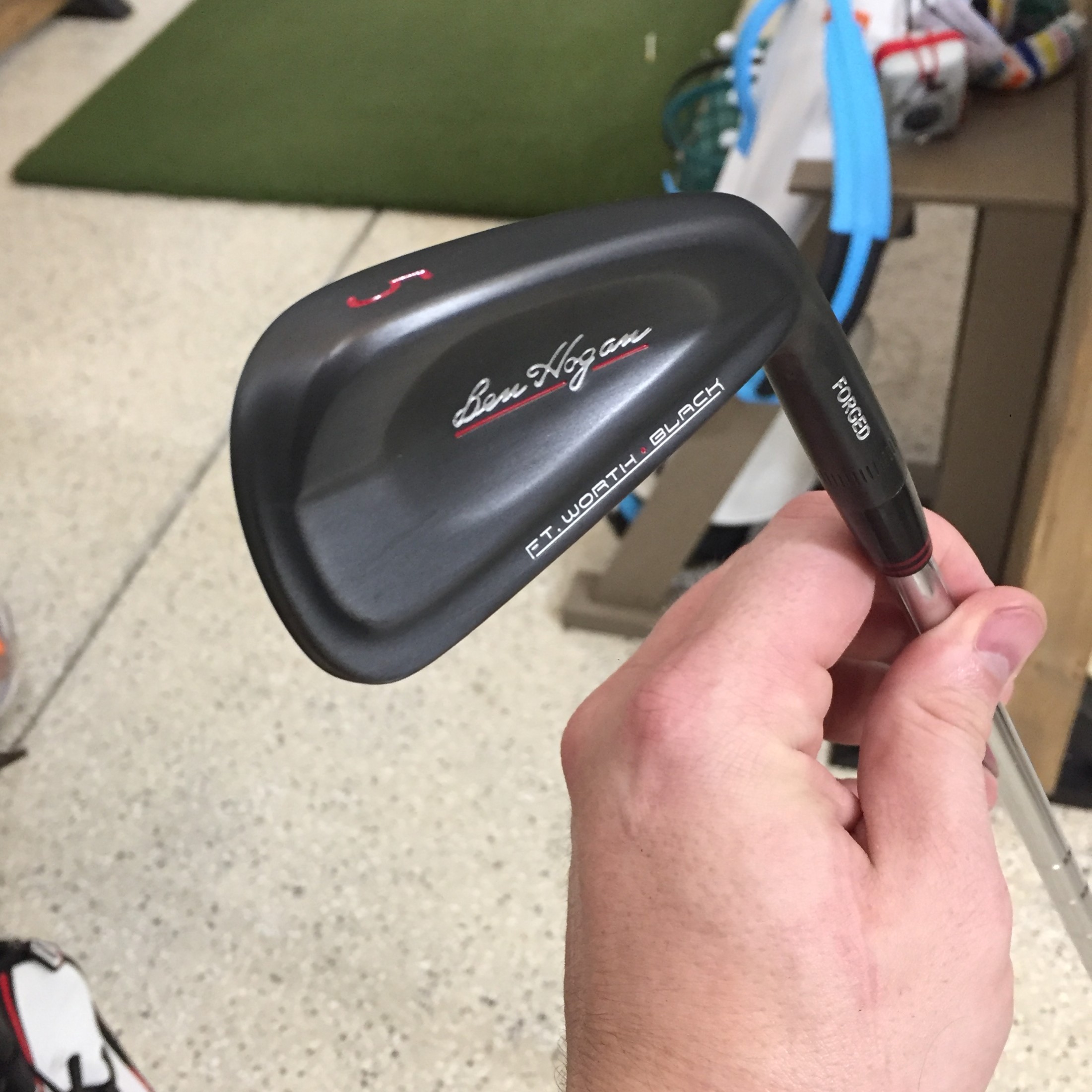
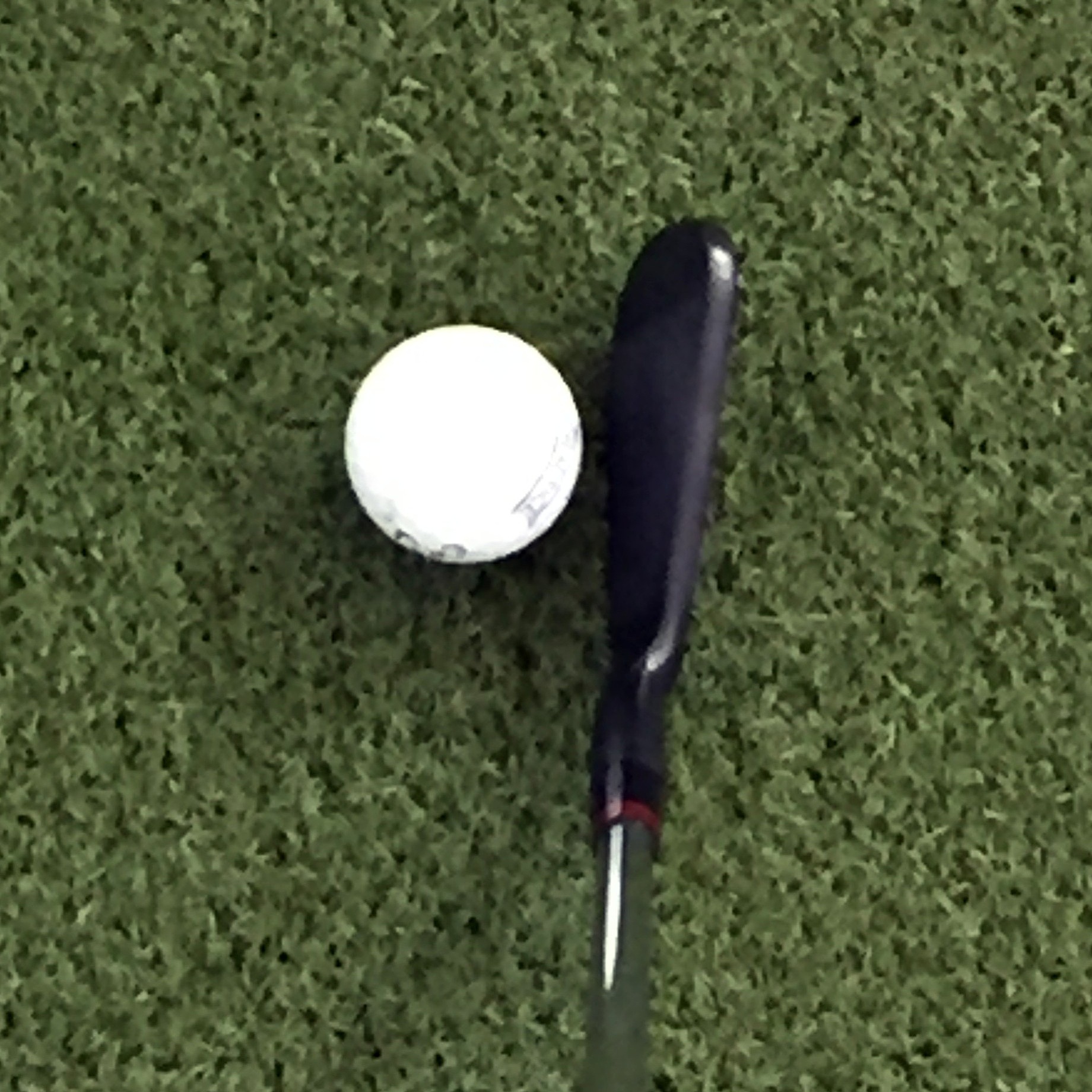
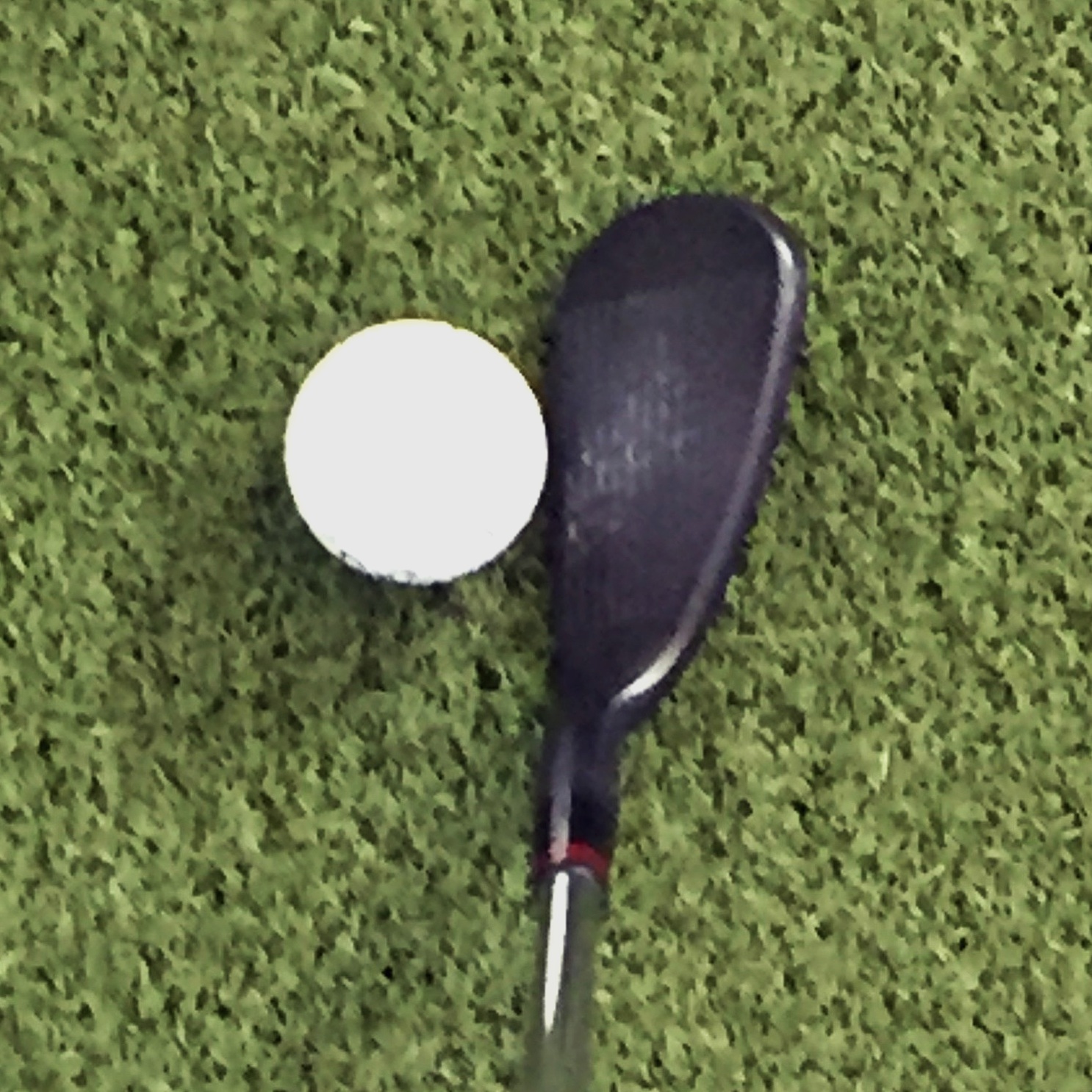
Weighting System
The first thing I noticed on the Ben Hogan Ft. Worth Black irons (besides the black color) was the progressive weighting system for each individual club. Almost any club you hit on the sweet spot is going to fly toward your intended target at a known distance. But for me, I look to see how a club performs when I don’t hit the sweet spot, because golf is obviously a game of misses.
With these clubs, if I hit a ball a little high on the face or a little off the toe, the club has added weight behind those areas, giving more mass behind the ball at impact. Ideally, this would mean my misses will still be closer to my target than a club that has little to no weight in those areas.
This is more pronounced in the long irons, where players tend to have more miss-hits. In the shorter irons, players have an easier time hitting the sweet spot, so the weight is progressively moved more towards the center of the club face.
PreciseLoft System
To me, this is one of the more exciting and forward-thinking aspects of these irons. When Hogan first introduced this loft system, I was one of the few people that thought it was a brilliant idea, giving the player the option to fill out his bag with whatever individual lofts he/she thought best fit their game. Years ago, club manufacturers had to start branding their club designs as going further and further, when in reality, many were just making the lofts stronger. Sure, players were hitting their irons further, but that just increased the distance gaps at the bottom of their bags, especially between the PW and SW or LW. Hence, why gap wedges started becoming popular around the mid-late 90’s, and now are almost a necessity.
I don’t think the idea caught on as much traction as the folks at Hogan had imagined (maybe because players are so accustomed to seeing 7 on the bottom of their club instead of 34°), but the principals remain today: widen the loft gaps with the long irons in order to narrow the loft gaps with the scoring clubs (short irons/wedges).
This chart compares the Ft. Worth Black PreciseLoft system to two competitor iron sets.
Compared to set #1, narrowing the gaps with the short irons gives players smaller distances between clubs, thus helping club selection into the greens.
Compared to set #2, the lofts are identical from 6i down to PW, but the biggest benefit is being able to space out the long irons from 22° to 30° in three clubs (4i-5i-6i) instead of spacing them out from 21° to 30° using four clubs (3i-4i-5i-6i). This allows players to carry an extra club in their bag, whether it is a 4th wedge, hybrid, driving iron, 5-wood, etc. How many of you would love the opportunity to add another club to your bag?
Look and Feel
The Ben Hogan Ft. Worth Black irons are made with a Diamond Black Metal finish, a much different look than a normal chrome or dulled gray color. I think it is a matter of individual preference, but I personally love the contrast it gives against the ball and grass. It looks fantastic.
It is designed to be a very durable finish compared to other black nickel or black oxide finishes, which would also help maintain the integrity of the grooves over time.
I could tell the difference between the black metal finish and typical carbon-steel forged irons. These felt a little harder metal at impact, but had a more consistent feel across all of my shots.
Overall Impression
I have always enjoyed the feel, look, and workability of a blade iron, but struggled finding the sweet spot consistently. The design team at Hogan has put together a great set of irons that can be played by a variety of players, and can see myself playing these for 15 more years.
Special thanks to Mistwood Golf Dome for assisting with this review.
REVIEW: Wilson Staff Cortex Driver
The new Wilson Staff Cortex driver seeks to make a name for itself among the big names in golf equipment. Can the Driver vs Driver winner hold its own?
Wilson Staff Cortex
The BEST Wilson driver ever
With the conclusion of the second season of Driver vs Driver, the world was introduced to the Wilson Staff Cortex driver. Having attended the Wilson Launch Party last week at Cantigny Golf in Wheaton, I had the opportunity to try the Cortex along with others in the industry who were chomping at the bit.
Needless to say, my first impression was very, very positive.
Amid hearing rumblings from friends in the industry that the Cortex was selling very well, I knew that I needed a second look, this time with a launch monitor. Despite not being fit for the demo I tested, I went with my best guess on what would fit me best and went for it.
But first, a note about brand perception
Immediate reaction to the Wilson Staff Cortex was mixed, to say the least. Early impressions about the driver’s performance were extremely positive (more on that in a minute), but the $499 price point was met with raised eyebrows, sneers, and outright disdain.
Wilson was called everything from “crazy” to “stupid” on social media, primarily from people who hadn’t even touched the Cortex let alone hit it. Their rationale centered around the brand perception of Wilson, suggesting the company is second-tier and has no business pricing a driver alongside the likes of Titleist, Callaway, Taylormade, and PING.
One Twitter follower went so far as to say Wilson is viewed as a “cheap” brand. Nothing could be further from the truth.
To suggest that a brand as well-established, longstanding and respected as Wilson Golf is somehow lesser than any of the largest OEMs is downright laughable. While their play on Tour is lower than others, the craftsmanship, R&D and attention to detail in their products is just as impressive as any brand you can name. Any thought, opinion, or stance that Wilson somehow cuts corners or falls short in terms of technology is ludacris if not flat out stupid.
One need not look farther than the Cortex for proof of their innovation and development capabilities, especially since they filmed a damn reality show explaining how their engineers evolved the final design.
Speaking of the final product, you’ll be pleased to hear that not only does the Cortex live up to its higher-end price tag, it also hangs with the “best” drivers on the market.


Feel and Appearance
The Wilson Staff Cortex driver is a bit muted in terms of its original prototype, which featured two adjustable weight tracks at the time. Wilson’s engineers fine-tuned the design to redistribute weight more efficiently in the club’s sole, eliminating the need for one of the weight tracks around the back perimeter of the head.
The track that remains — which allows you to adjust launch from “high” to “low” settings — looks like a feature that belongs on a modern-day driver. The slide track can also be fine-tuned to adjust spin rate and decent angle. Two stationary weights of 8g and 2g brace the sole and can be interchanged to favor a draw or neutral shot bias. Wilson’s familiar red coloring is pleasing to the eye and adds to the high-quality appearance of the club’s tech.
The crown of the Cortex is also impressive as the design features a carbon fiber composite material many brands are using. A minimal alignment aid is helpful with squaring the driver to the ball at address, and the overall head shape appears deep and confidence-boosting.
In terms of feel, the Cortex is one of the best feeling drivers I’ve ever hit. The sound is crisp yet solid at impact, which I absolutely love. The white Atmos stock shaft looks fantastic against the darker clubhead, and overall weight of the club feels light without feeling flimsy. The Cortex is a driver that feels like you can rip the hell out of your drive.
Performance
The Cortex surprised me in terms of distance and control. I’ll be honest: I have never hit Wilson Staff drivers all that well, especially when compared to my gamer. The Cortex was not only easy to control in terms of accuracy, but distance, launch and spin numbers were also impressive.
While my demo club featured the Atmos Red shaft (high launch, high spin), which is likely not ideal for my swing tendencies, ball launch monitor data was still solid. Ball speed averaged 150 mph in my test session, which is slightly lower than my gamer but still playable. Launch was a bit higher than I needed thanks to the aforementioned shaft (19 degrees on average), spin hovered around 2700 rpm in my sample that controlled any ballooning.
I averaged roughly 265 yards on the launch monitor with the Cortex, which is slightly shorter than my gamer, but not by much. At the end of the day, I could easily game the Cortex and not miss a beat with my play tendencies.
Final Impression
There is no doubt in my mind that the Wilson Staff Cortex is the best driver the brand has made in a long, long time… possibly ever. There’s also no question the tech and design warrants the $499 price tag, especially since the Cortex holds its own against competitors in its class.
For me, if I were looking to switch to the Cortex full-time, I would base that decision on its incredible feel, sound, and accuracy. If you’re gaming a driver that’s a few years old and are willing to give Wilson a chance, rest assured you’ll experience the same benefits of modern tech in the Cortex as you would with any other brand. With a proper fitting, I’d wager the Cortex could outperform many of its competitors.
Do Rapid Release Cycles Intentionally Mislead Consumers?
Do golf brands intentionally mislead consumers via their rapid release cycles? Let’s take a moment to address a dangerous mindset.
For an industry that has more competitors and moving parts than you could possibly imagine, the golf equipment industry does a fantastic job of keeping their customers informed, engaged, and coming back for more. However, the volume of products available can be overwhelming, which can confuse consumers and lead to false conclusions as we try to make sense of it all.
I’ll cover a few of these misconceptions in a series of brief posts, but I encourage you to offer your own views in the comments section below. You can also contact me via email at golfunfiltered@gmail.com.
Part 1: Do OEMs intentionally mislead consumers via rapid release cycles?
I recently received a series of messages from a reader who was absolutely convinced that golf’s biggest brands maintain equipment release cycles meant to intentionally mislead their consumers. While I vehemently disagreed with the points he argued, it was not the first time I’d heard this hypothesis, nor will it be the last.
Golf’s original equipment manufacturers (OEMs) are the brands that we all know. Any company that produces parts and equipment that can be marketed by another manufacturer falls into this category. Think Callaway, TaylorMade, PING, Srixon, Cleveland, Bridgestone, Mizuno, and others.
For years these companies have been locked in competition to find a place in your golf bag, and this has become more difficult over the last five years. I’ve argued the quality gap between one OEM to the next is more narrow today than ever before, which actually helps consumers more than it hinders. You almost can’t go wrong with anything you purchase.
In an attempt to widen this gap — at least in the perception of the consumer — many OEMs have gone the route of “more is better” in terms of releasing new equipment to the market. Release cycles have sped up considerably over the years as golf’s major brands appear to churn out new equipment at a break-neck pace.
While not entirely accurate — many OEMs operate on biennial release cycles, if not longer — the sheer volume of brands following different timelines can alter our perception. More “new stuff” is released across all brands more often, so golfers feel like they just saw a new product release last month.
While perception is reality, it’s important to remember that OEMs do not want to intentionally confuse the consumer via their release schedule. That confusion occurs when the same brand releases more than one similar product in the same calendar year, and it’s something brands must do a better job at explaining.
Callaway Golf is an example of a brand that handles this well. As Harry Arnett explained in episode 152 of the GU podcast, the 2018 release of Callaway Rogue required a detailed explanation of how it differed from the Callaway Epic line, which was released months prior. In this instance, the Rogue was not a replacement for Epic; the two lines were to co-exist as a means to cast the widest net to capture the largest scope of golfers who fall into specific equipment categories.
Did consumers catch on to this difference? It would be naive to think all golfers knew that Rogue did not “replace” Epic, but this isn’t Callaway’s fault. It’s human nature to assume the new shiny toy is “better” than the last, especially since the majority of industries follow this exact logic with their new products. I received numerous emails from readers and podcast listeners who made this abundantly clear to me.
Callaway is just one example, of course, but it’s a case that further validates there is no perfect recipe to follow when releasing new products to the public. There are far greater risks to the OEM than the consumer when release cycles speed up, as I’ve discussed in the past. Overproduction and excessive inventory are incredibly hazardous forms of waste and should be avoided at all costs.
So while no successful company intentionally misleads their consumers (even typing that sentence feels dirty, but it’s a sentiment shared with me often enough to prompt this post), brands should never overlook the reality of consumer perception regardless of planning. Properly educating customers can be more valuable than the revenue generated from a one-time sale of a new product, and can continue to pay off for years.
REVIEW: The SteadHead Golf Training Aid
The SteadHead golf training aid by R&D Golf helps you minimize one of the game’s worst swing faults.
(Interested in purchasing a SteadHead of your own? Visit rdgolf.net and use promo code GUPOD at checkout for 10% off!)
One of the most oft-used pieces of golf advice most of us have heard is to “Keep your head down!” when making contact with the ball. However, many teachers will tell you to ignore this advice as multiple swing faults can result from restricting natural movement in the swing. Instead, the better mantra is to keep your head steady.
The SteadHead golf training aid by R&D Golf was designed with the latter in mind, and it couldn’t be any simpler to use. I had the chance to test the training aid during a recent range session, and while it takes some getting used to, there is definitely something important to learn from using the SteadHead.
What is the SteadHead?
R&D Golf is a new business venture for mini-tour golfer Reed Howard, a man whose background is as interesting as his golf swing.
Fans of Moe Norman’s single-plane swing will have likely stumbled upon one of Howard’s videos on YouTube. Howard, am accomplished collegiate golfer and son to Academy Award winning director Ron Howard, exemplifies how swinging the club on a single plane can benefit your game. You just have to get used to seeing what looks to be an uncomfortable move on the ball, but its results speak for themselves.
If you watch the first few seconds of the above video you will see Howard’s swing in slow motion. Watch his head throughout the swing. What you’ll see — or rather, what you will not see — is excessive head sway or rotation. That’s the quality that Howard’s SteadHead hopes to instill in your swing.
How Does the SteadHead Work?
As you can see in Reed’s video above, using the SteadHead is incredibly simple. All you need is a baseball cap and a golf club, although the best results come from actually hitting golf balls on the range.
After clipping the SteadHead to the bill of your cap, you’ll notice the yellow diamond-shaped object directly in your line-of-sight. The trick here is to focus on the golf ball while wearing the training aid, which can be difficult at first. However, after taking a few practice swings with a wedge I was able to figure it out and realized the true benefit of using the aid.
Excessive head movement in any direction during the swing is bad news. The SteadHead provides a visual cue to give you instant feedback on how much — or how little — your head moves throughout a normal golf swing. I found this to be incredibly helpful in diagnosing my own head movement, which I am happy to report was minimal and consistent.
Who Should Buy the SteadHead Training Aid?
If you struggle with inconsistent strikes throughout your round, such as hitting the ball too thin or too fat, and you just can’t seem to figure out why, the SteadHead might be the answer.
When I am playing poorly I tend to hit the ball too thin, which obviously means I am lifting up or shallowing out my attack angle at some point in the swing. Video feedback has taught me that I have a tendency to stand up straighter at impact than at address, which will cause my head to lift.
Using the SteadHead helped me control this swing fault during my practice session. Thanks to the training aid’s design I was able to see where my head was in relation to the golf ball at address. It was easy to then keep the yellow diamond in the same location as I took my swing, which let me know how much I was moving my head.
I have no doubt that the SteadHead will help my game over the cold winter months by helping me practice sound swing mechanics without being too intrusive.
You can purchase the SteadHead for $24.99 at the R&D Golf website, www.rdgolf.net.
REVIEW: Srixon Z U85 Utility Iron
The new Srixon Z U85 utility irons offer golfers of any level more options in their long game. Read our review here.
Srixon Z U85
Take control of the course
The new Srixon Z U85 utility irons are another take on last season’s exceptional Z U65, the most played utility club on the PGA Tour. Expanding to more lofts to reach even more players of different levels, the Z U85 is another example of the greatness of this product series.
Background and Technology
The Srixon Z U85 was built for distance: there is absolutely no doubt about that. The SUP10 cup face design combined with a fully hollow clubhead construction helps you get the golf ball into the air more easily, optimizing launch and producing ball speeds you’d usually expect from a wood.
All of that distance and forgiveness is worthless if you don’t have confidence to use it. Srixon addressed this admirably by designing a club with the look of a long iron, while the club’s wide sole makes you believe you can hit it from any lie. The stock UST Recoil 95 graphite shaft has the look of steel, further instilling confidence when you look down at the club.
The success of the Z U65 gave Srixon the opportunity to expand the scope of their reach with this new iteration. You can now order the Z U85 in five different lofts, spanning from the 18° driving iron down to a 29° 6-iron. This allows you to group the Z U85 in a combo with any of the other Z Series options, making it one of the most versatile series available on the market.
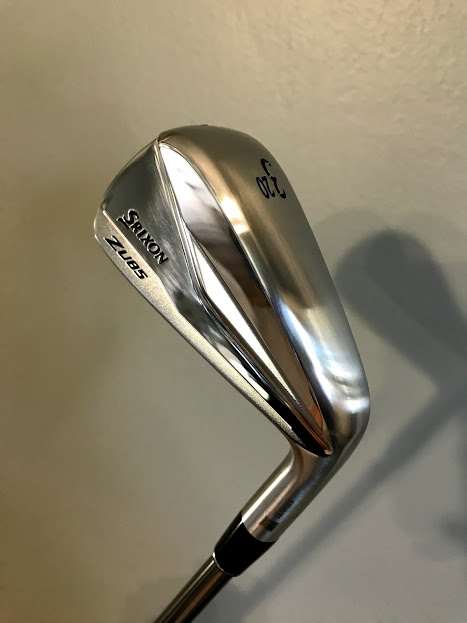
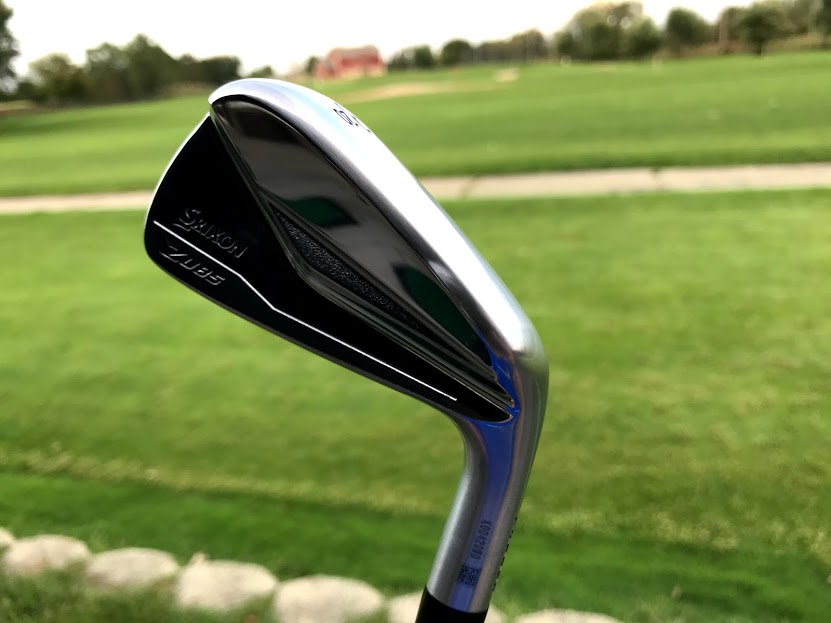

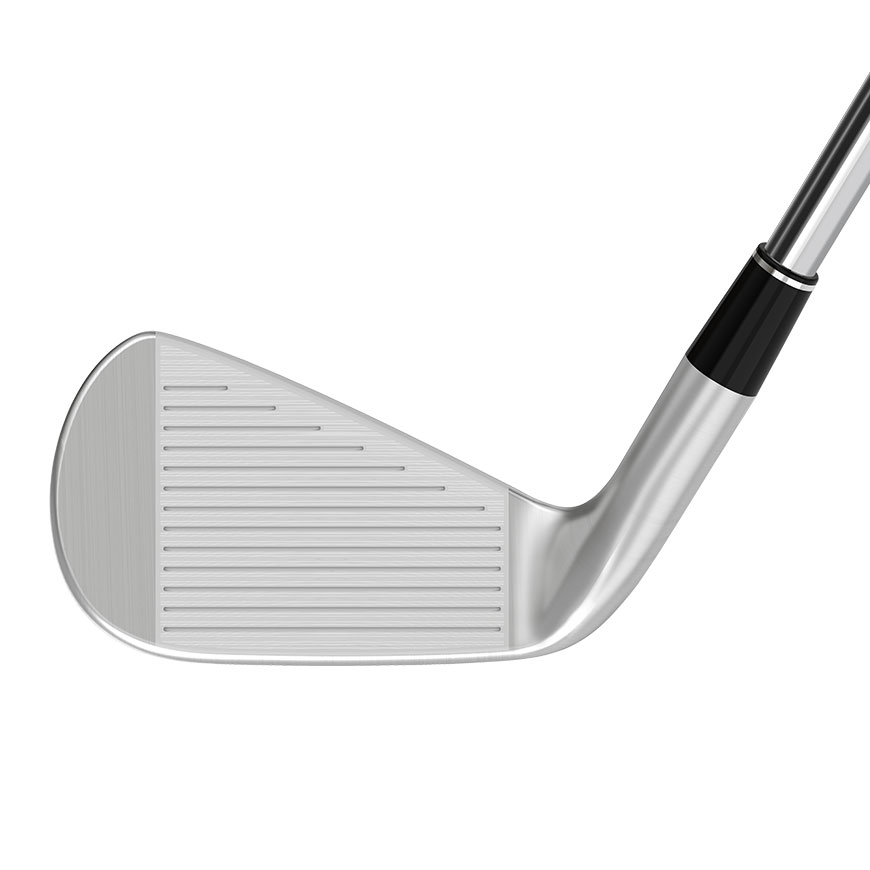

Performance and Feel
Everything about the Z U85 feels solid. You’d think the concept of a fully hollow clubhead would make it feel or sound cheap. This is not the case, of course, which is confirmed with every swing of the club.
At impact the club sounds explosive. When struck well, the Z U85 resonates like you’d expect a tour-quality product would. Better players will appreciate this detail, and higher handicap players looking to boost their confidence will as well.
I found the 20° iron to be extraordinary off the tee and fairway, making it a weapon from over 200 yards. It was also impressive from the rough, opening the door to more scoring opportunities even after a wayward tee shot. As someone who usually struggles with par 5’s, any chance to cover more yardage in less shots is a positive.
In my driving range test, the Z U85 averaged 223 yards in the air. Dispersion was very tight — four yards on average — and launch conditions were ideal for this club category (14° launch, 3300 rpm spin rate). Average ball speed exceeded 130 mph, which is testament to how powerful this iron can be.
I did have a tendency to lose the ball left on misses, especially shots off the toe. The club’s forgiving tech controlled distance loss on these shots, which can be both helpful and concerning depending on the situation. As someone who normally plays a draw with my longer clubs, more practice with the Z U85 will be needed to limit these hooks when the pressure is on.
Overall Impression
The new Srixon Z U85 iron is an incredible utility option for players of any caliber. While there is no massive jump in tech in this year’s offering compared to the previous model, its overall performance remains stellar. I have no doubt this will be another hit with better players looking to ditch their hybrids or long irons.
The Srixon Z U85 retails for $199.99.
REVIEW: Srixon Z 785 Driver
The new Srixon Z 785 driver comes to the table with a ton of expectations. Did they meet them all? Read out review here.
Srixon Z 785 Driver
Some promises are meant to be kept
The new Srixon Z 785 driver breaks onto the scene making a lot of promises. In discussions with Srixon, we were told to expect big things from their new line of metal woods. Could they deliver, and would it be noticeable among a crowded market saturated with promises?
The answer, simply, is yes.
Srixon Z 785 Driver Background and Specs
In a time when every major golf OEM preaches distance gains and improved accuracy, it should come as no surprise that some brands get lost in the noise. Srixon's Z 765 and Z 565 drivers were incredibly well made clubs, and received their fair share of accolades. However, despite the fan fare and somewhat cult following, I never saw a single Srixon driver in any playing partner's bag last season.
That's going to change with this upgrade, I promise you that.
“This driver’s faster. This driver’s longer. This driver’s better,” said PGA TOUR player Keegan Bradley. “It’s really coming off hot and straight. It’s very forgiving and the sweet spot is really big.”
“The new Z Series Woods are pretty easy to explain: they’re long,” said Srixon's Marketing Director Brian Schielke. “Longer than our past woods, and longer than the competition. Our stronger, faster titanium, combined with cup face construction is totally unique, totally different from everything out there, and it really shows up both on a launch monitor and on the course.”
Readers of this site know how PR-speak works. Every brand is going to talk up their products, get quotes from notable names, and consumers have the option of buying into the hype or ignoring the noise. It's not often, at least in my experience, for products to truly live up to that hype.
For crying out loud, Srixon is advertising that their new Z-Series drivers produce faster ball speeds than TaylorMade M3 and M4, Ping G400, and Callaway Rogue. Right on the main section of their freakin' website.
That either takes a ton of guts, or a glutton for punishment. That's a massive risk.
Guess what? They were right.
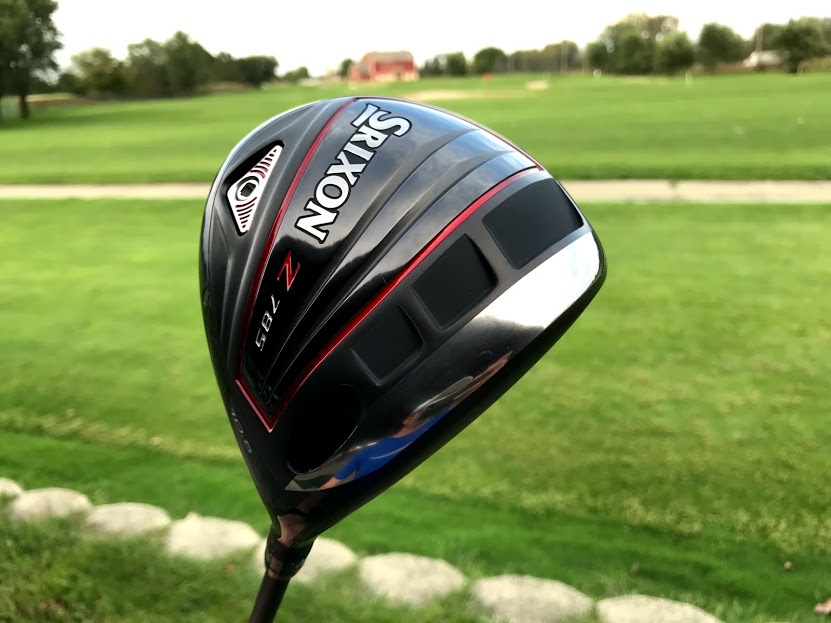

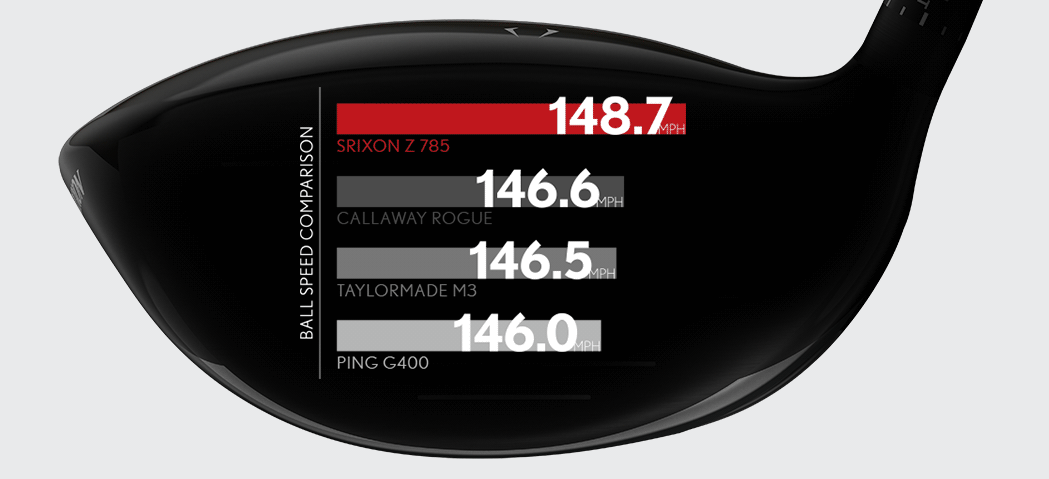
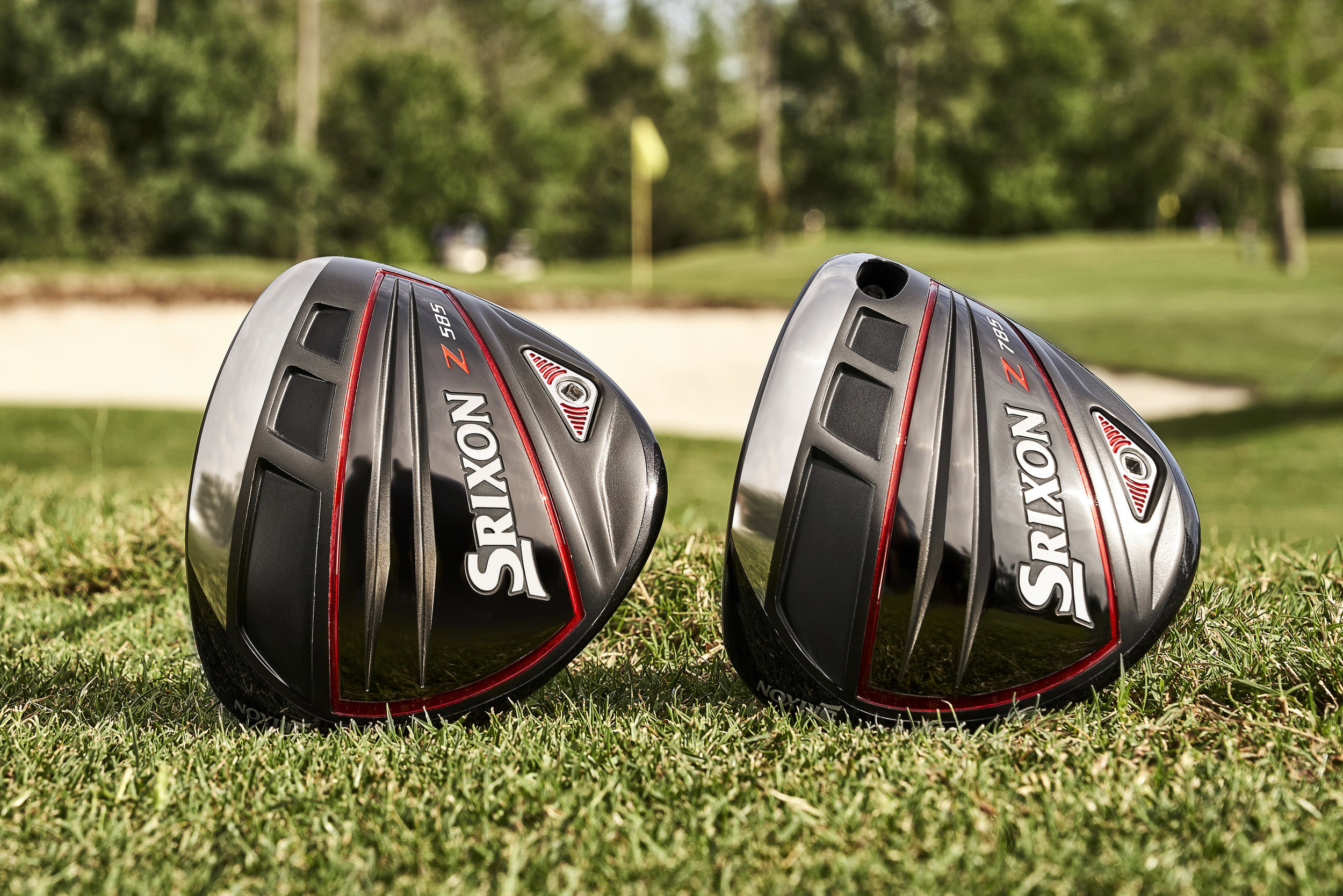
Feel, Appearance and Performance
The Srixon Z 785 driver looks like a player's club from top to bottom. The new carbon crown is similar to the look of competitor clubs, but this build allows for weight to be redistributed to key areas within the clubhead. With the muted black-grey coloring, this adds to the style considerably and maintains a look fans of Srixon will love.
The sole of the Z 785 is "flashier" than past models, adding a red hue to the outer lining of the head. This makes the club pop in appearance, which I absolutely love. Srixon prefers to stay within the traditional realm, but a little color never hurt anyone.
The real magic occurs within the clubhead. The new TI51AF Cup Face design is designed to flex more at impact, boosting ball speeds across the face. Since most mere mortals (like you and me) won't make contact on the sweet spot every drive, this feature adds to the club's overall forgiveness in terms of both speed and accuracy.
The Z 785 feels muted and soft at impact, and sound is loud but not sharp. I've always loved the crisp sound Srixon metal woods produce, and this new generation is no different. Nobody likes to draw unwanted attention on the tee due to a loud driver, and you can hear when a club is designed for better players. Such is the case with this club.
During a dry ball test in normal conditions, drives with the Z 785 averaged 270 yards with ball speeds exceeding 150 mph. Not only is this longer and faster than the Z 765 for me, it's equal to the longest drivers I've tested to date.
Thanks to the HZRDUS stock shaft in my review model, launch conditions with the Z 785 were also ideal. Initial launch came in at 16°, which is slightly below optimal (depending on who you believe). Spin was slightly higher than ideal at just over 3000 rpm, which I believe can be adjusted with a quick loft change.
Peak height was slightly higher than I would normally prefer at 35 yards on average, but this again could be due to loft setting and adjusting to different shaft characteristics. Still, distance did not suffer from this quality even if loft was left untouched.
Overall Impression
There's a lot of good to say about the Srixon Z 785 driver. Like the Z 785 irons, the golf ball jumps off the face with ease and lands in a tight dispersion near your target. Distance was incredibly impressive, especially since Srixon teased this quality for months leading up to release. There's no doubt players will be equally impressed with the club's performance, leading to more drivers in golf bags everywhere.




